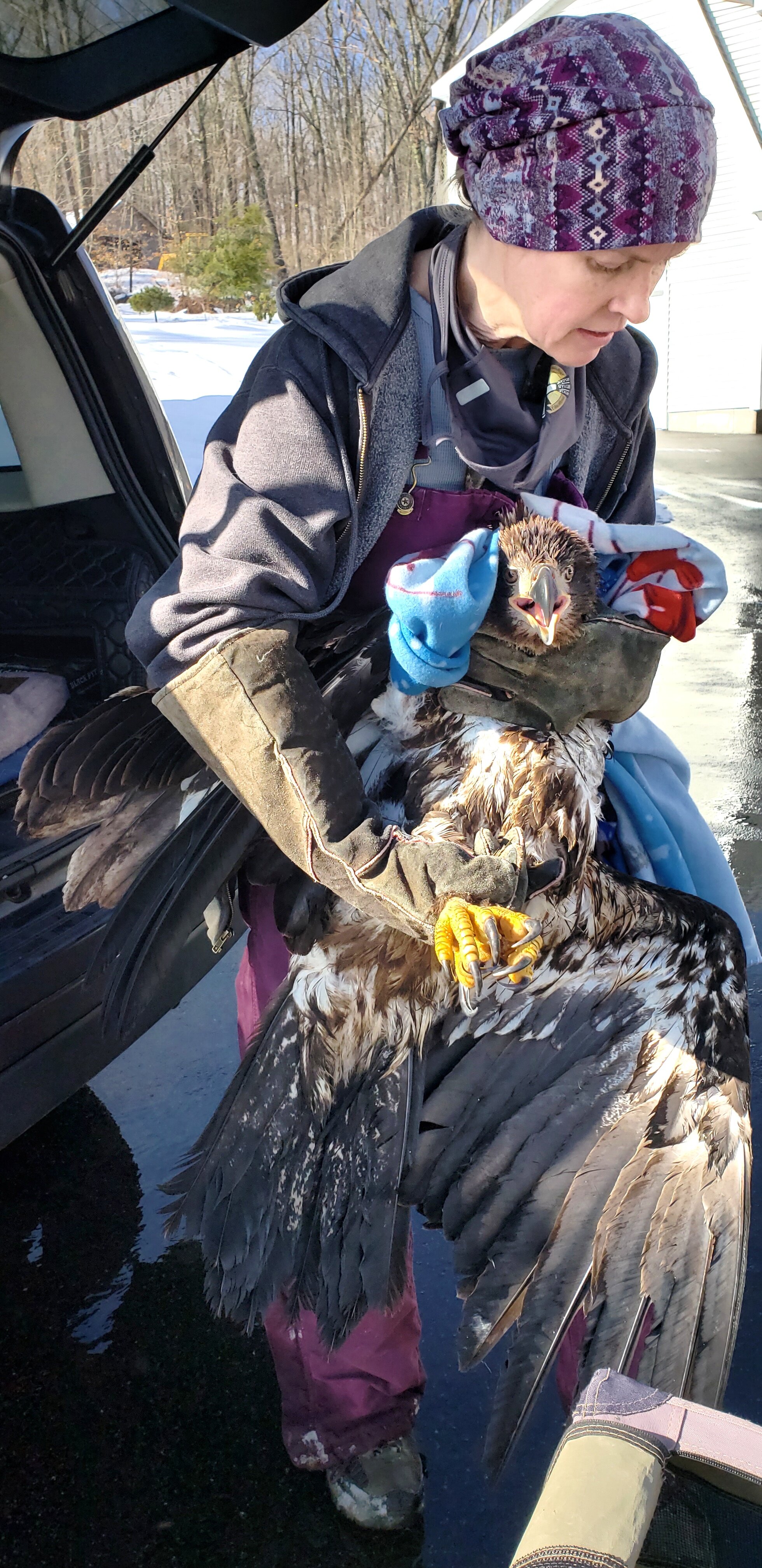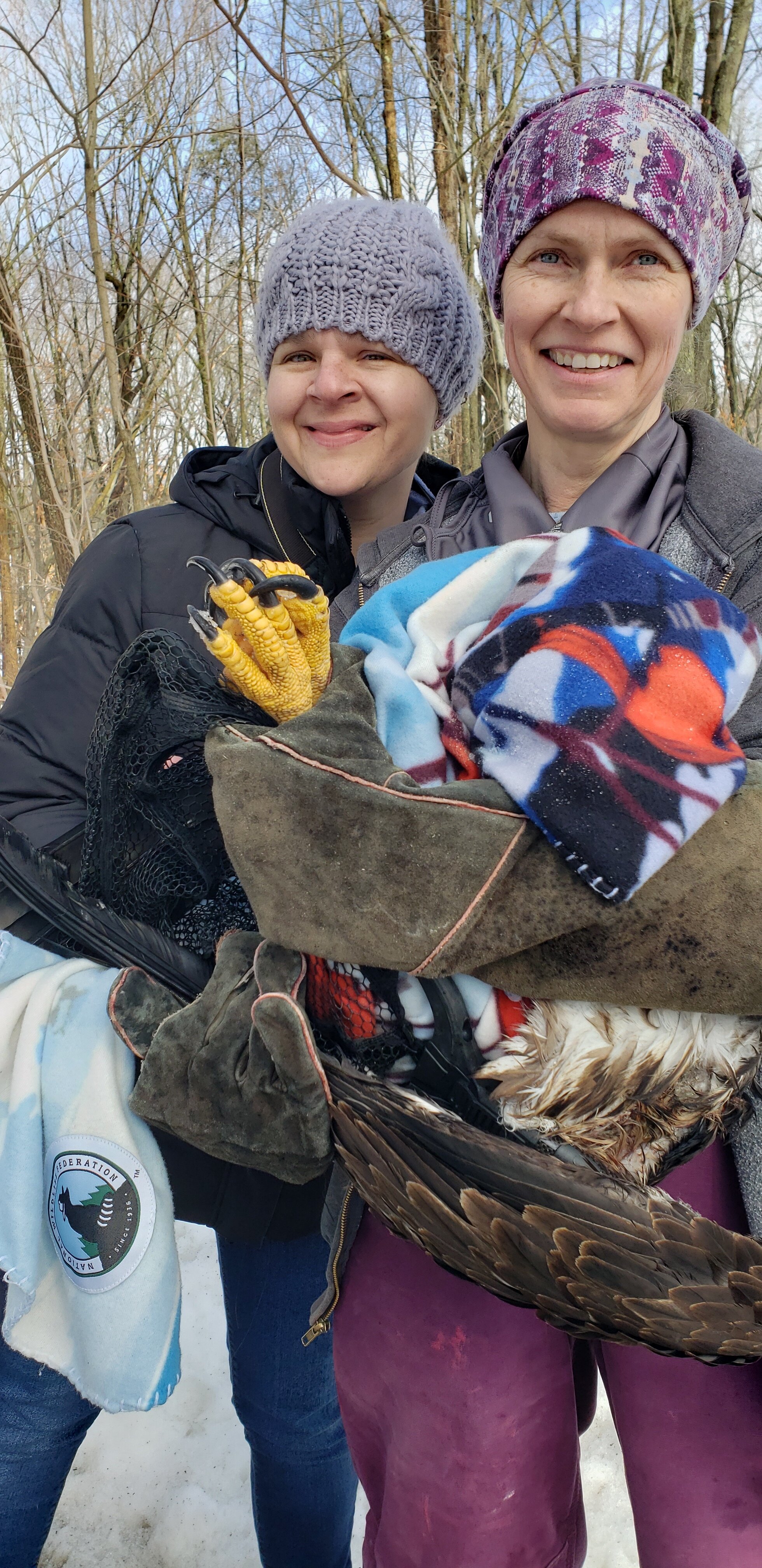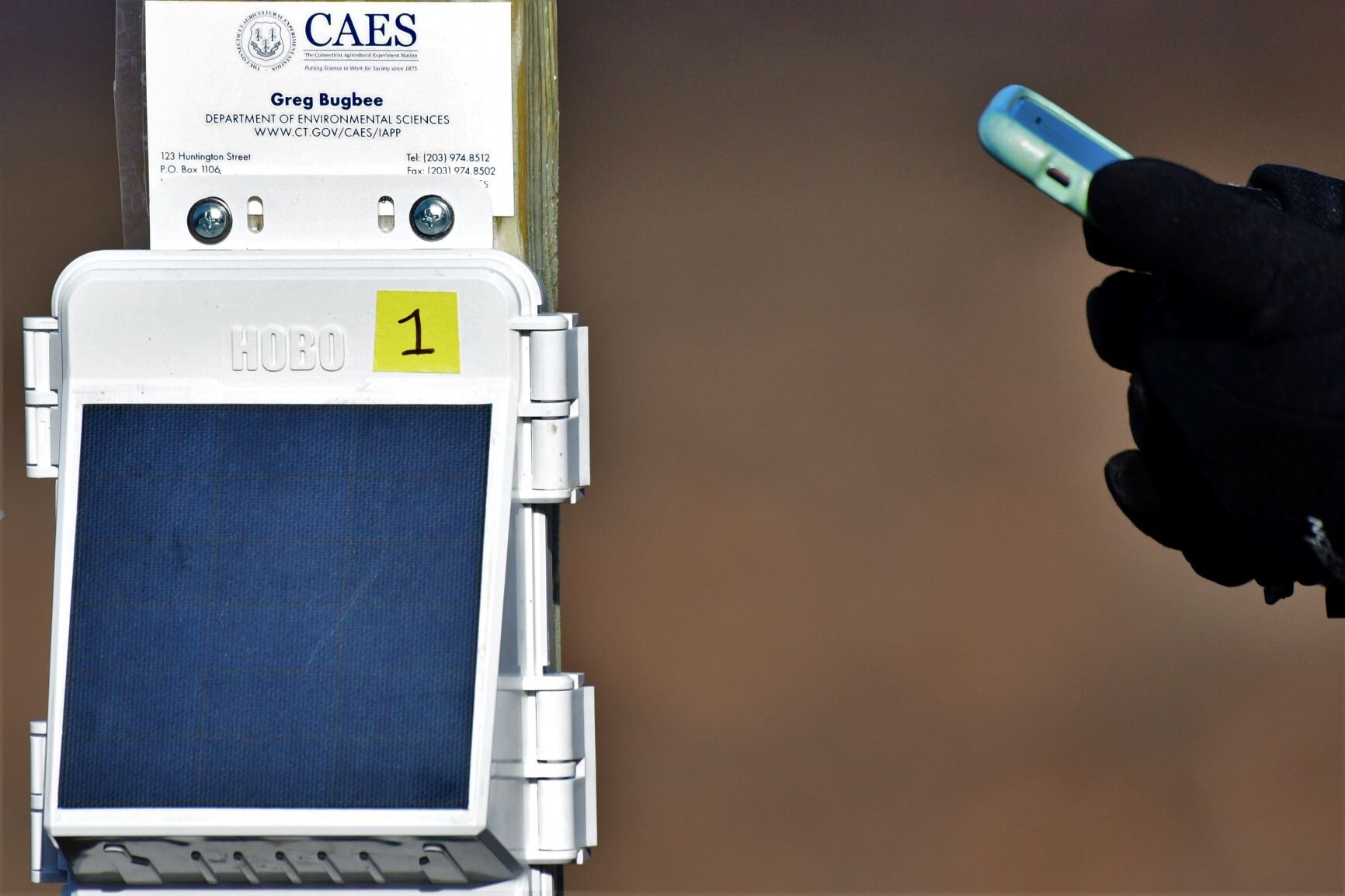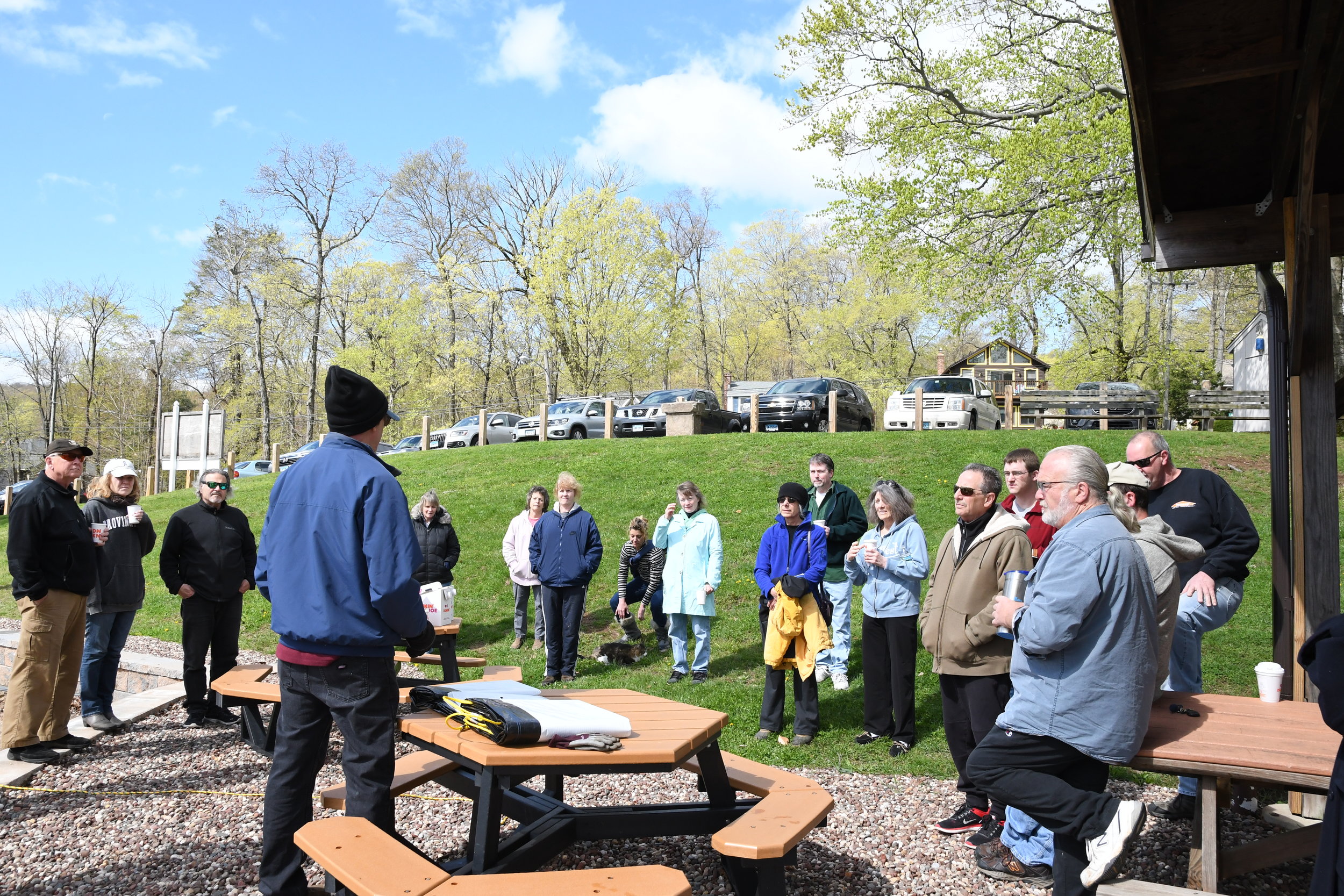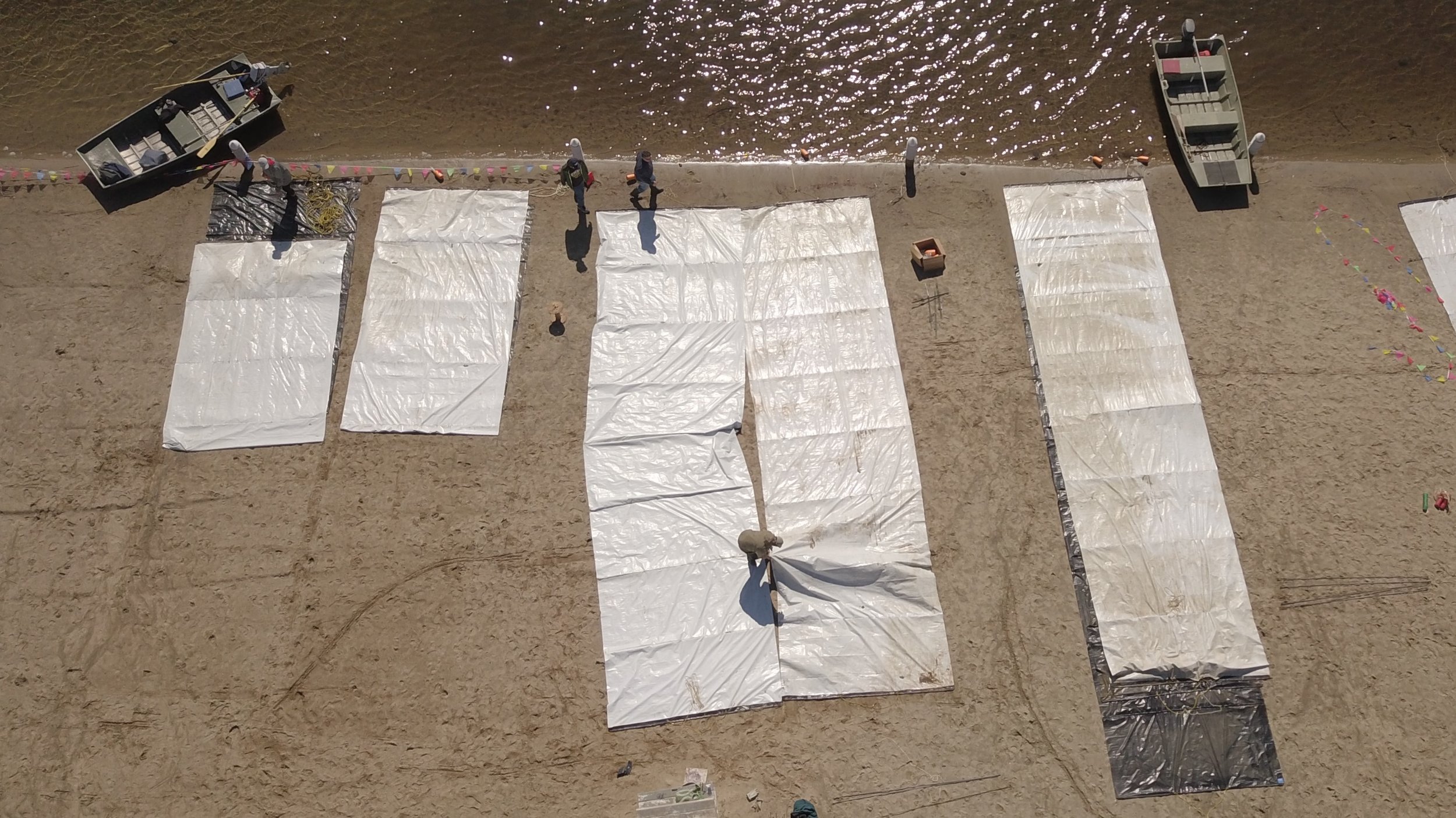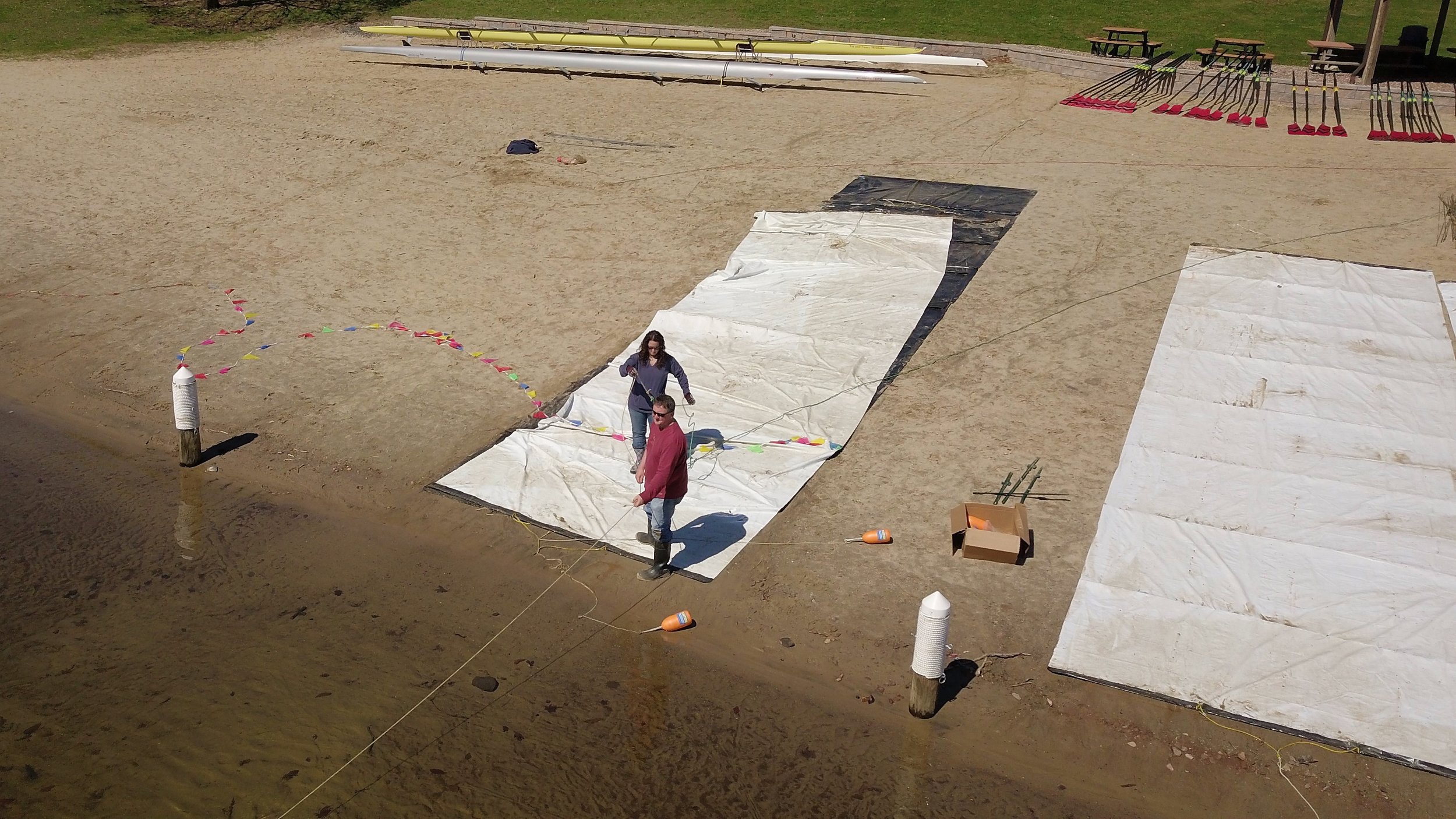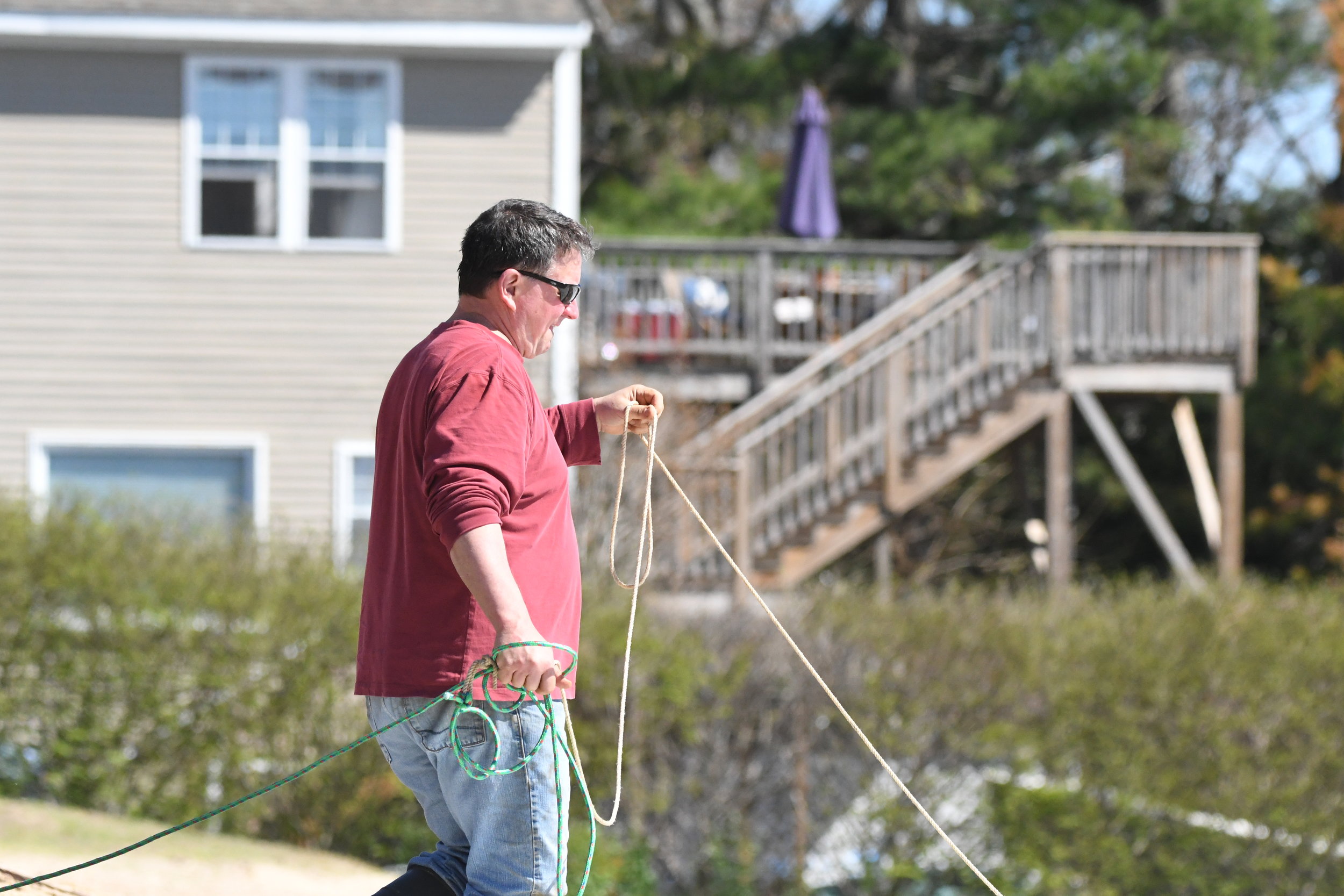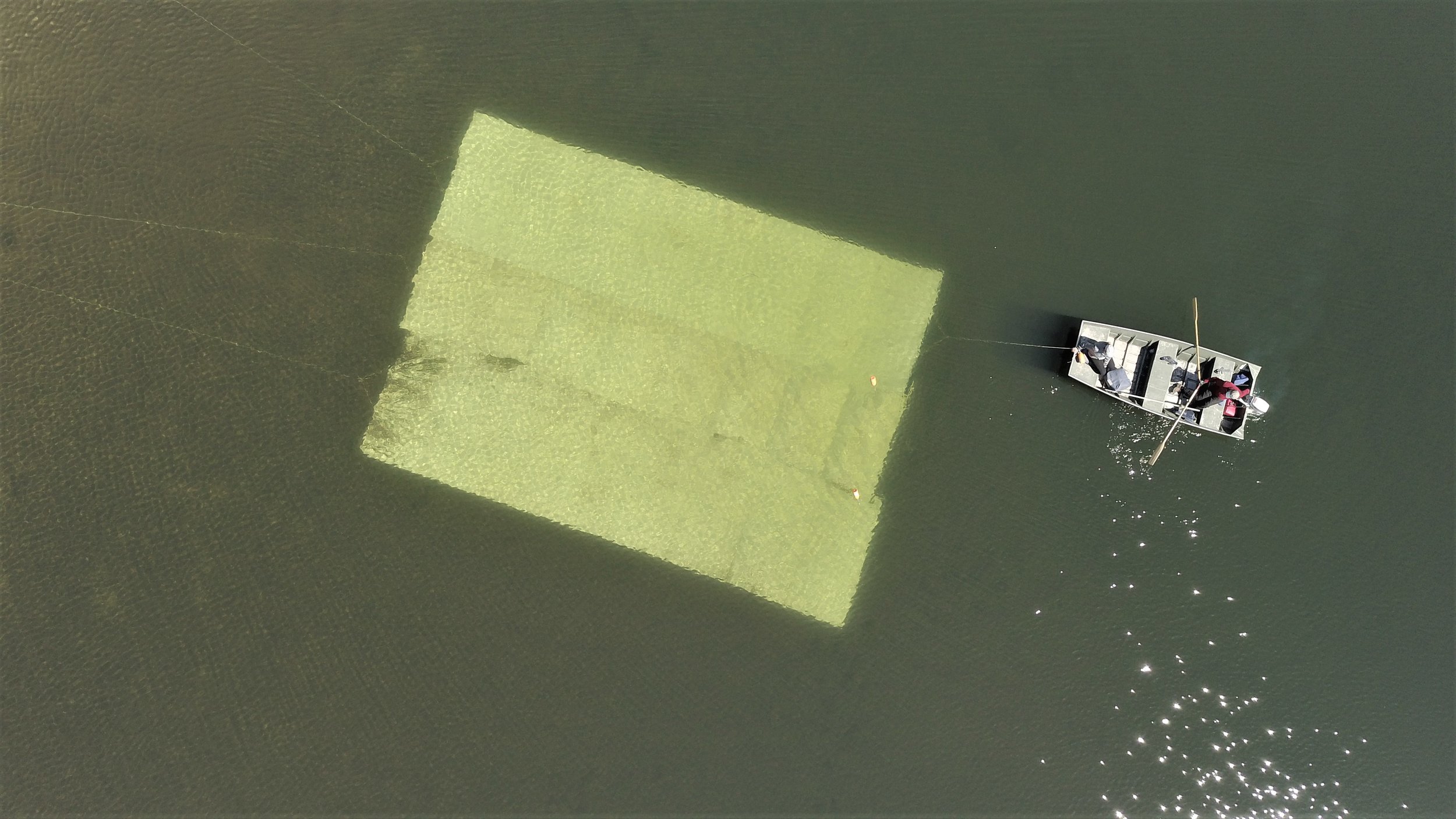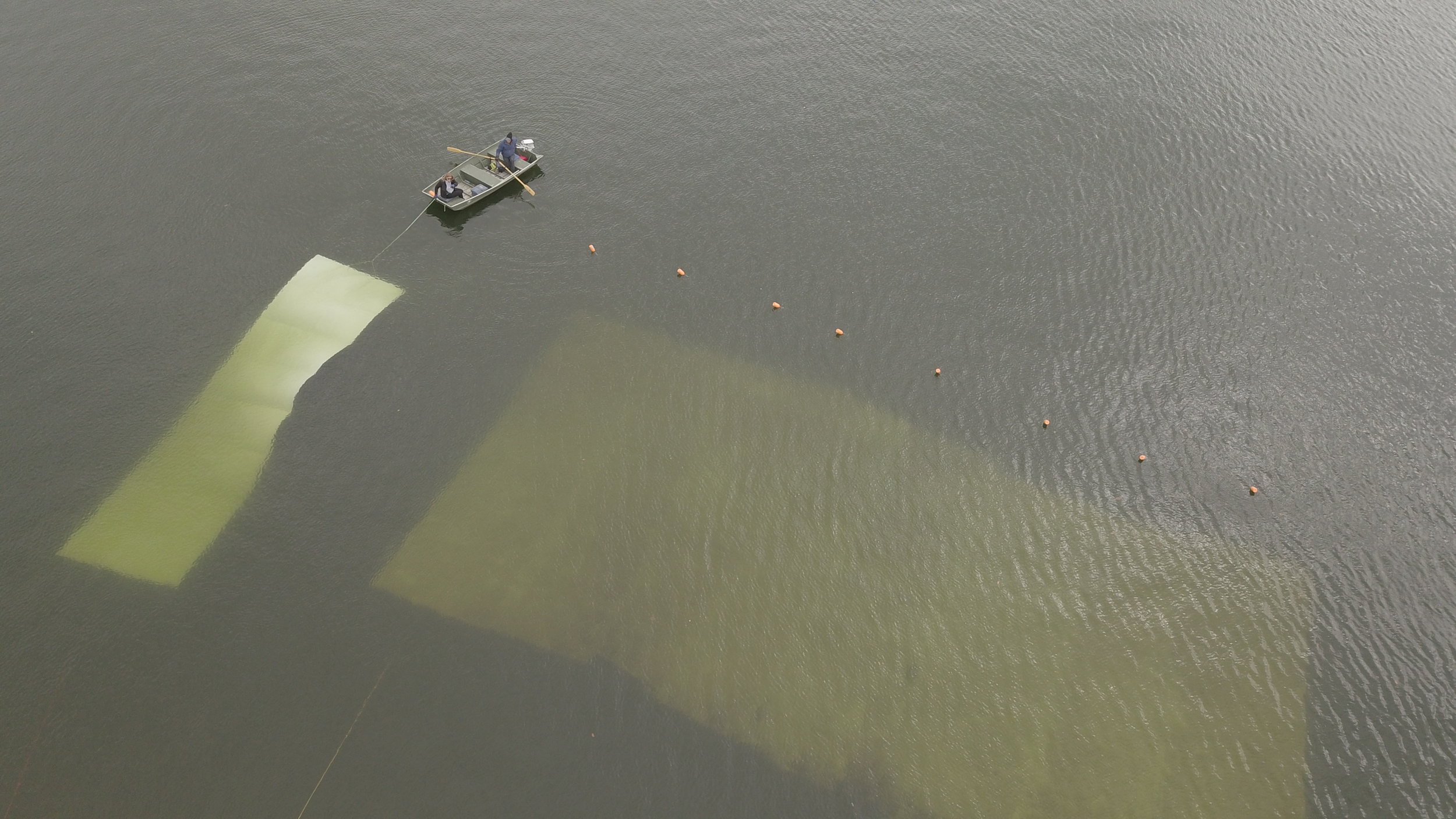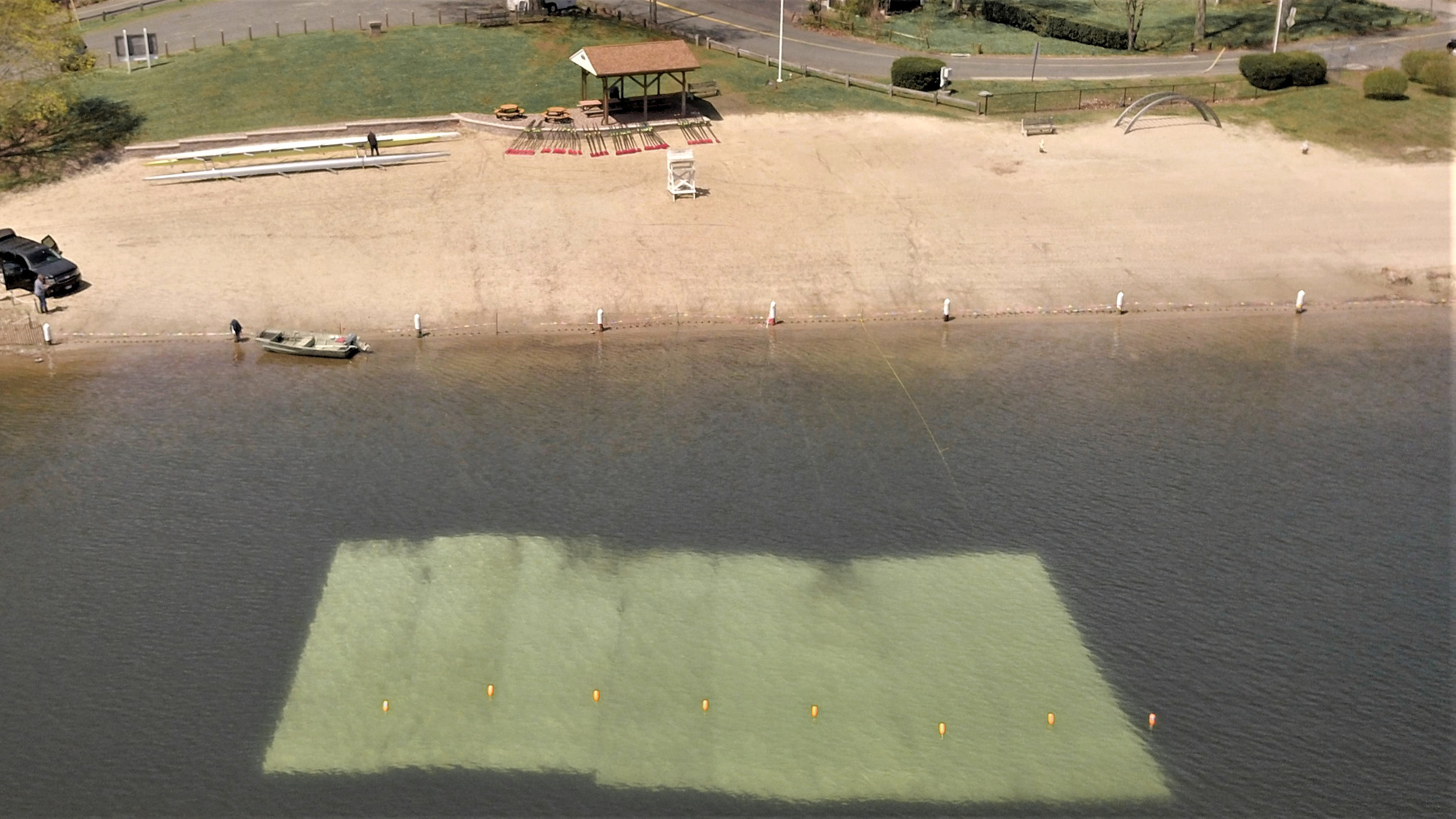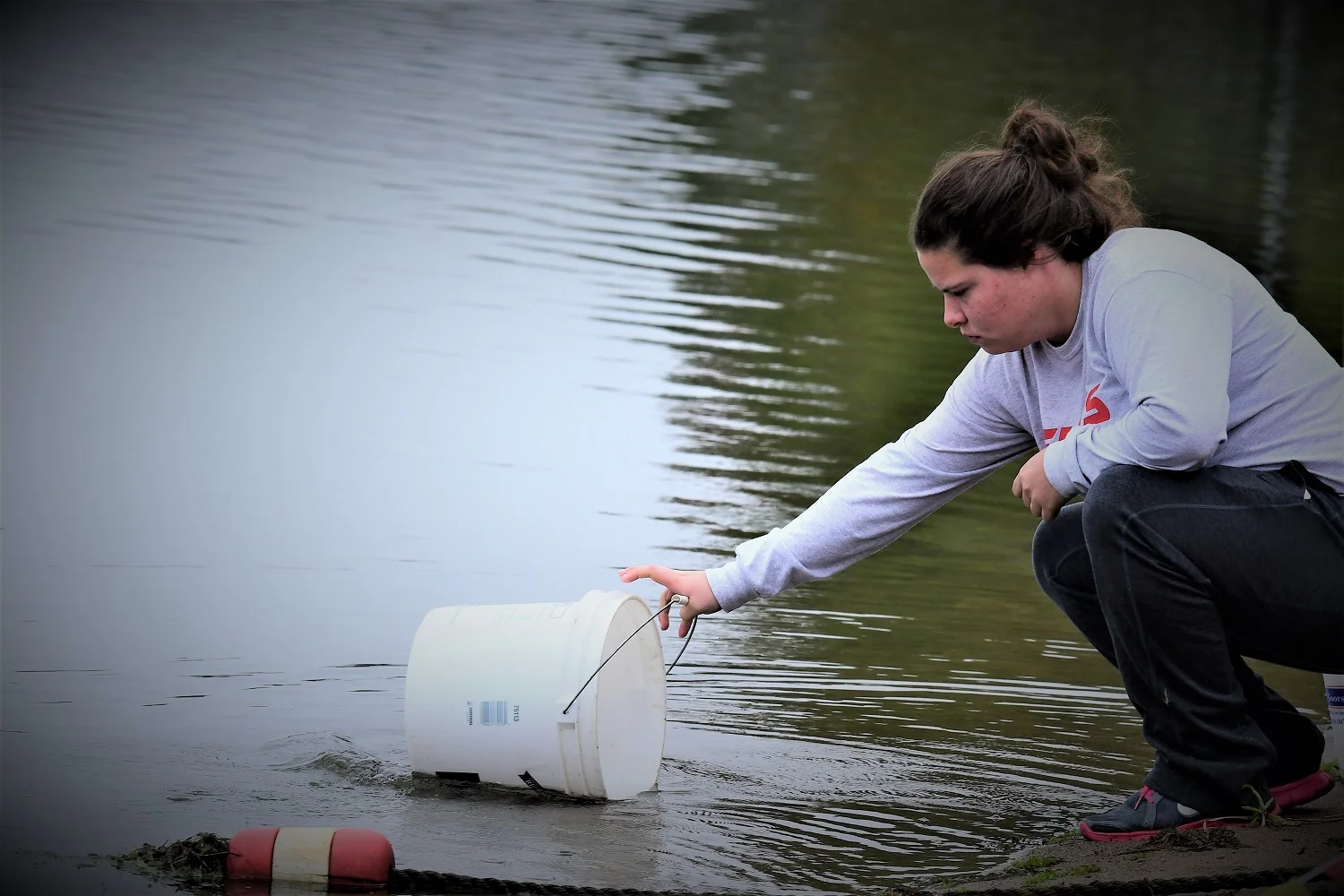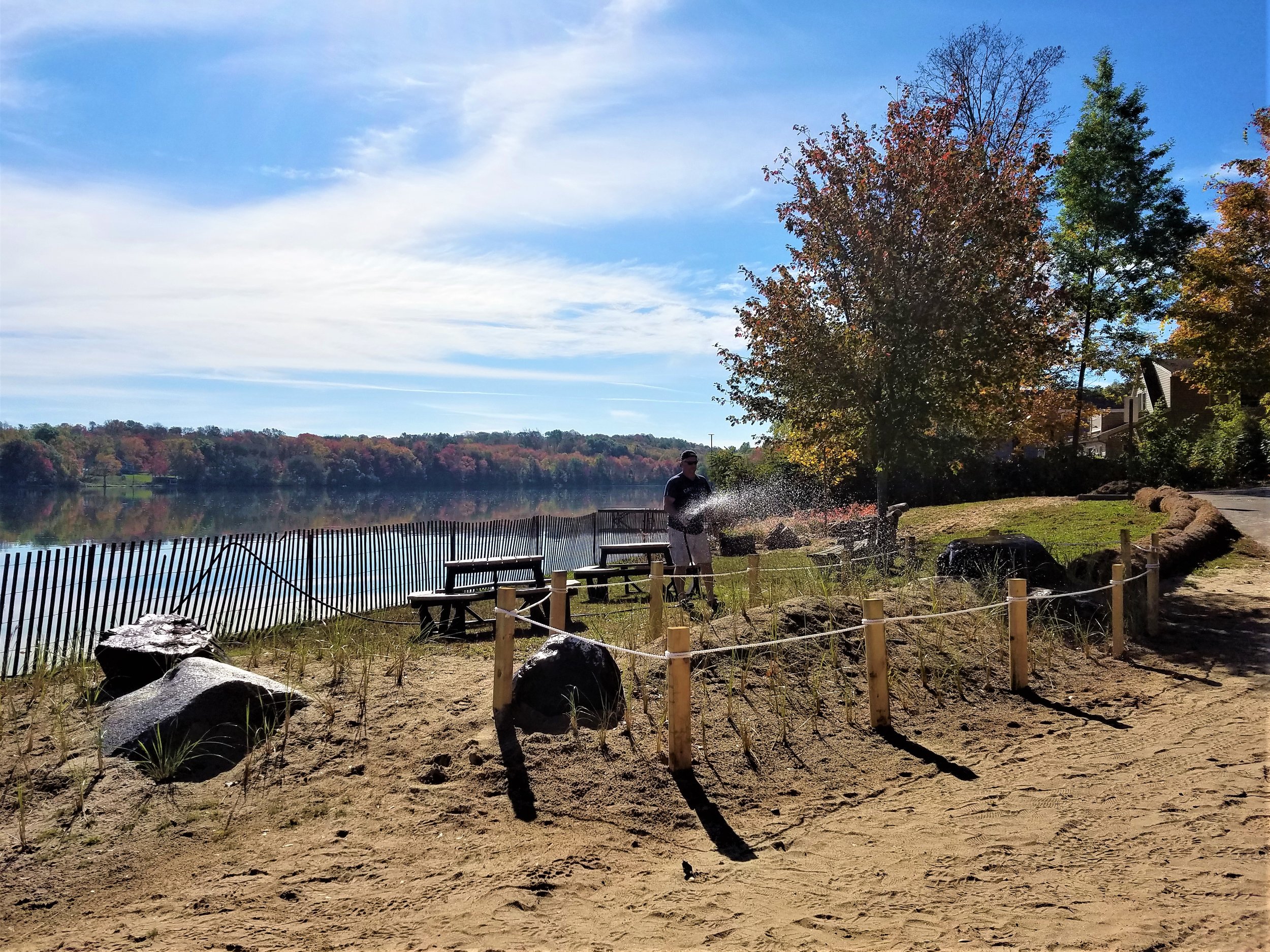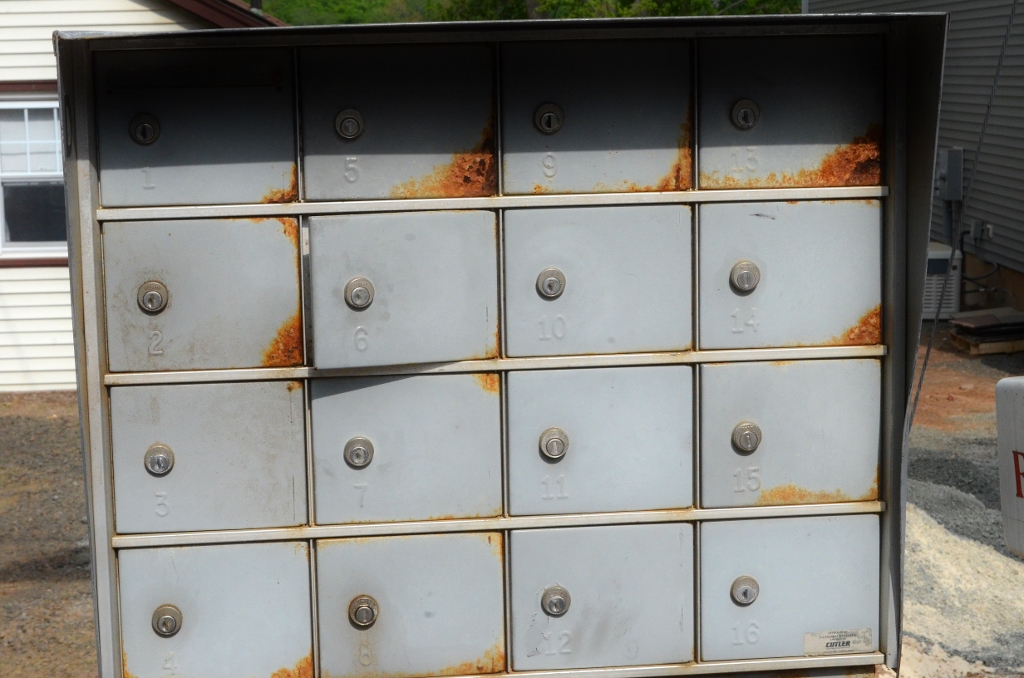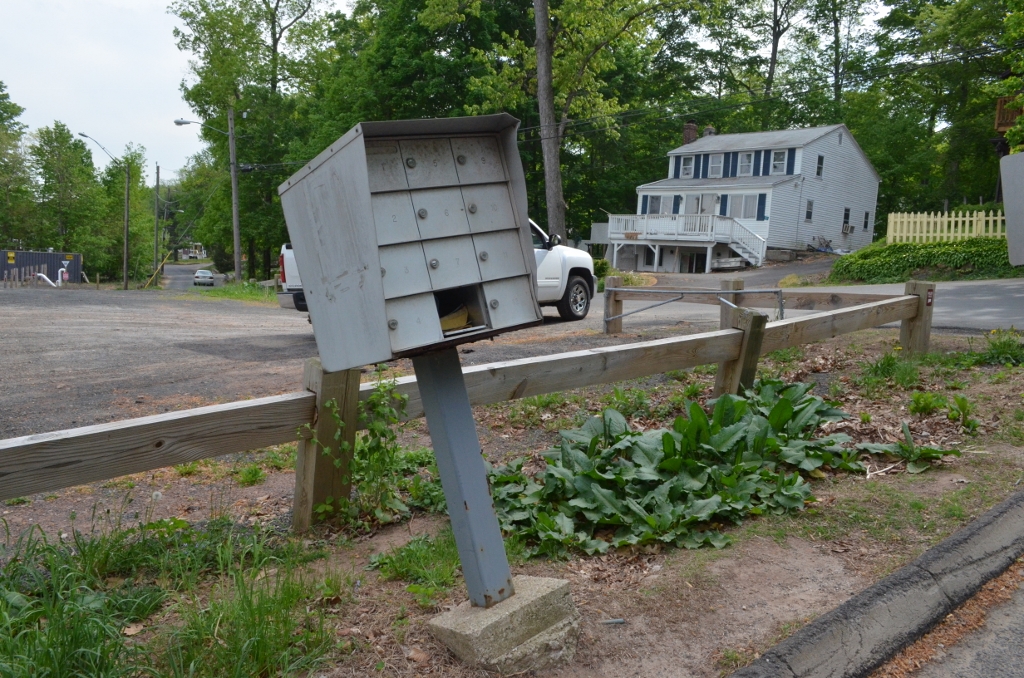Beseck juvenile Bald eagle rescue
This morning, February 16, a juvenile Bald eagle was spotted off of Lake Rd by resident, Paul Konikowski. He observed the very large beautiful bird in a wooded area for quite some time. He shared the sighting with his neighbors. Cindy Saraceno, reached out to me about the bird asking if I could confirm it to be a juvenile Bald eagle. It was in fact, a beautiful second year eagle. I asked if it appeared ill or injured. They could not detect any visible signs of distress, however, it continued to stick around perched rather low to the ground, which is not necessarily abnormal. Residents kept a watchful eye as it hopped onto the ground while I put a call in to Christine Cummings at A Place Called Hope. I shared with her some photos taken by Cindy for any possible clues that might indicate that the bird was in distress. Christine diverted her travel plans from Middletown to Beseck Lake. She was on scene quickly, and identified that it had a wing injury. The female juvenile Bald eagle will receive a evaluation of the extent of its injuries.
We will keep everyone posted with updates below. Please also check out A Place Called Hope for updates.
DONATIONS
If you would like to join me and Cindy in making a donation to this amazing rescue in any amount, here's a link to contribute to all the amazing work they do: www.aplacecalledhoperaptors.com/about-apch/
Other ways you can help:
You can select A Place Called Hope as a charitable organization through Amazon smile so they can receive donations of 0.5% from your eligible Amazon purchases.
You can adopt your favorite resident bird of prey! Sponsors will receive a Certificate of Adoption with sponsors name, a Photograph of bird chosen, the Bird’s personal story of survival and some general information about the Bird’s particular species. www.aplacecalledhoperaptors.com/adopt-a-bird/
You can donate supplies: Paper towels, stamps and wee wee pads are always a priority need.
What a great way to support a great cause!
_____________________________________________
Update, 2/16 4:15p from Christine...
"OK here's the good news, the wing itself is intact. The bad news is the blood where I thought the wing was injured was just from the injury which is up on the shoulder. The bird has a ginormous laceration with necrotic skin tissue. I have cleaned it up the best I could and medicated it and the bird will see the vet tomorrow. I am not sure what the cause is. It could be from another bird. Could be from a car? I don't know. But it is not fresh. She is 11 pounds underweight."
_____________________________________________
Update, 2/16 6:30p from Christine...
"So I went to my other vet because I really wanted to make sure nothing was broken and to see if he couldn't suture up the wound. The x-ray revealed nothing is broken and no lead shot pellet in the body. The wound has a lot of dead tissue so he will not be able to suture it until next week. In the meantime, I am going to be using special medications to soften the area and get rid of the dead tissue. All of this will prep for a surgical procedure. The bird is on injectable antibiotics"
______________________________________________
Update, 2/16 A Place Called Hope fb page…www.facebook.com/APlaceCalledHope/posts/3619219278156048
______________________________________________
Update, 2/17 5:30p from Christine…
“We got a lot of food in her today. The wound looks horrible…I am anxious for her to be sutured. The problem is the area has too much dead tissue. The treatment is supposed to soften the skin tissue and debride the dead skin. The tissue needs to be pink and have good circulation to be able to suture…”
photo credit: A Place Called Hope
______________________________________________
HOBO DATA LOGGERS AT BESECK LAKE
Many of us think of our drawdown as a tool that aides in killing off invasive plants. However, different conditions need to come together in order for it to be effective.
In CTDEEP's manual, Caring for Our Lakes: "Winter drawdown of lakes and ponds exposes sediments and macrophytes to freezing temperatures. This technique has been proven very effective in killing Eurasian watermilfoil beds when circumstances are right. The kill is most complete, for example, when the freeze occurs after the sediments have had a chance to dry. The primary advantage of winter drawdown is the relatively low cost compared to other weed control options.”
Larry Marsicano, Aquatic Ecosystem Research was involved in a study that was published in 2014 that had specific evidence supporting that "Eurasian watermilfoil root systems can be killed by either exposure to a temperature of −5 C, or a sediment moisture level of 0.02 m3/m3 for 24 to 48 h". The abstract “A laboratory examination of the effectiveness of a winter seasonal lake drawdown to control invasive Eurasian watermilfoil (Myriophyllum spicatum)” can be found here.
On January 21, 2021, Connecticut Agricultural Experiment Station Invasive Aquatic Plant Program placed three HOBO data loggers in Beseck Lake. These data loggers are being used to track air temperature, sediment temperature, and sediment moisture during the winter drawdown of the lake. This data is important in determining when and if the lake is reaching optimal conditions that would allow freezing of the roots of invasive species during our drawdown. See the HOBO graphs below that are updated hourly, it includes data every 5 minutes . You can also Check out the dashboard to see the data in real-time.
Please ignore any data before January 21, 2021 at 2pm. HOBO Site 3 has two sediment moisture probes, labeled as A and B. The temperature is listed in degrees Celsius, zero is freezing.
*Note: When sediment temperature is below freezing, the accuracy of sediment moisture declines.
HOBO DASHBOARD
Check out the data from each monitor, compare their differences. Play around with the sliders at the bottom of each chart to take a closer look at something specific. You can sort by past day, week, month. (note that deployment was on January 21, 2021, prior data is from testing done at the Ag Station) Switch from SI Units to US Units to display the temperature in Fahrenheit. Watch for sustained sediment temperatures of −5 °C (23 °F) for 48 hours that replicate the lab conditions successful at killing invasive plant roots.
2019 Lake Bottom Blanket Results
Lake Bottom blankets were tested in a 100’ x 40’ section of the 200’ x 100’ swim area at Beseck Beach in April 2019. The barriers were removed 2 months later, in June. Aerial footage of barrier placement was taken during the install and again at the end of summer, 3 months after their removal. After stacking the photos for before and after comparison, this is the result. Do you see the defined weed-free area where the blankets were in place?
Lake Bottom Blankets for Aquatic Invasive Species Control
On Saturday April 27, the Lake Beseck Environment Committee invited people out to learn more about the “Lake Bottom Blankets” that are being trialed at the swim area at Lake Beseck Beach.
The Lake Bottom Blanket is an effective chemical free option for the control of aquatic weeds that have detrimental effects on water quality and the recreational use of Lakes and Ponds. The blankets were created for lake front property owners who wish to rid their waterfront of aquatic weeds. The blankets come in a variety of sizes.
New research is finding that in less than 4 weeks you can eliminate weeds for the entire season - this is a game changer for the swim area since we can apply them early and remove them prior to swim season. Here, with the assistance of CT Agricultural Experiment Station and Aquatic Ecosystem Research, we are installing several 10' x 40' barriers in the swim area. The barriers have sewn pockets that rebar slides into to weight them to the lake bottom. This particular company suggests using 3/8" rebar, with an option of using 1/2" on the ends if you need additional weight. Due to storm events that create water turbulence from our outfalls, we used 1/2" rebar on the ends and also added a couple more pieces toward the middle of the mats - (6) 10' x 3/8" pieces and (4) 10' x 1/2" pieces for 40' length mats.
The barriers in the swim area will stay down for 1 month and be removed prior to Memorial Day. We've heard good things about these particular weed barriers. CT Ag Station has also used them with good results. To learn more, you can check them out for yourself, here: https://lakebottomblanket.com/
Due to Beseck being a State owned lake, permitting is required for us. Permitting takes time, and can sometimes be challenging, that’s why we have professional consultants that can navigate us through the process. If this is something that you are interested in, please contact us right away so your application can be submitted with the required maps, and plant survey results.
Beseck Beach Project 2017/2018
A MASTER plan is in the works for Beseck Beach
The plan will not only begin to beautify the beach, but provide erosion control measures, and act as a deterrent for the geese that have been making it their home.
Phase I of the Beach Project began this summer with small additions of Cape Cod style fencing, flag ropes, a sand dune, landscape rocks, and American Beach grass while the master plan comes together. The project is a collaborative effort of the Town of Middlefield, Lake Environment Committee, Middlefield Park and Recreation.
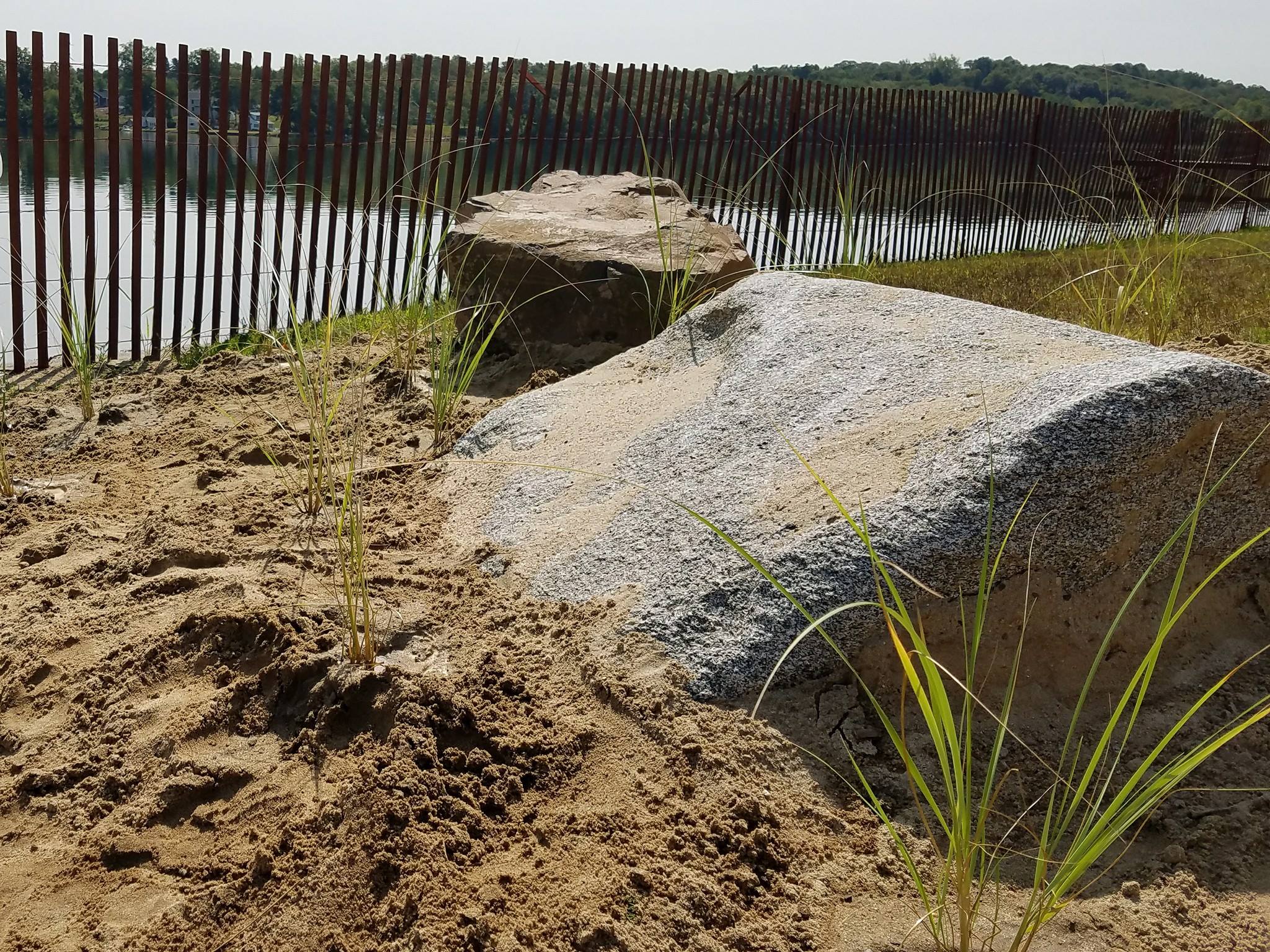

9/29/2017
Wow, big score today! 20 Coir logs (biodegradable erosion control logs that will be used to secure new landscapes on the hillside) were donated from a job site for the price of delivery, thanks to the resourcefulness of Kathy Connolly, Speaking of Landscapes, LLC who has been working with the Town on the beach project! A minimum savings of $1,500! Many thanks to Public Works for offloading, and to the Town for your ongoing investment in our community!
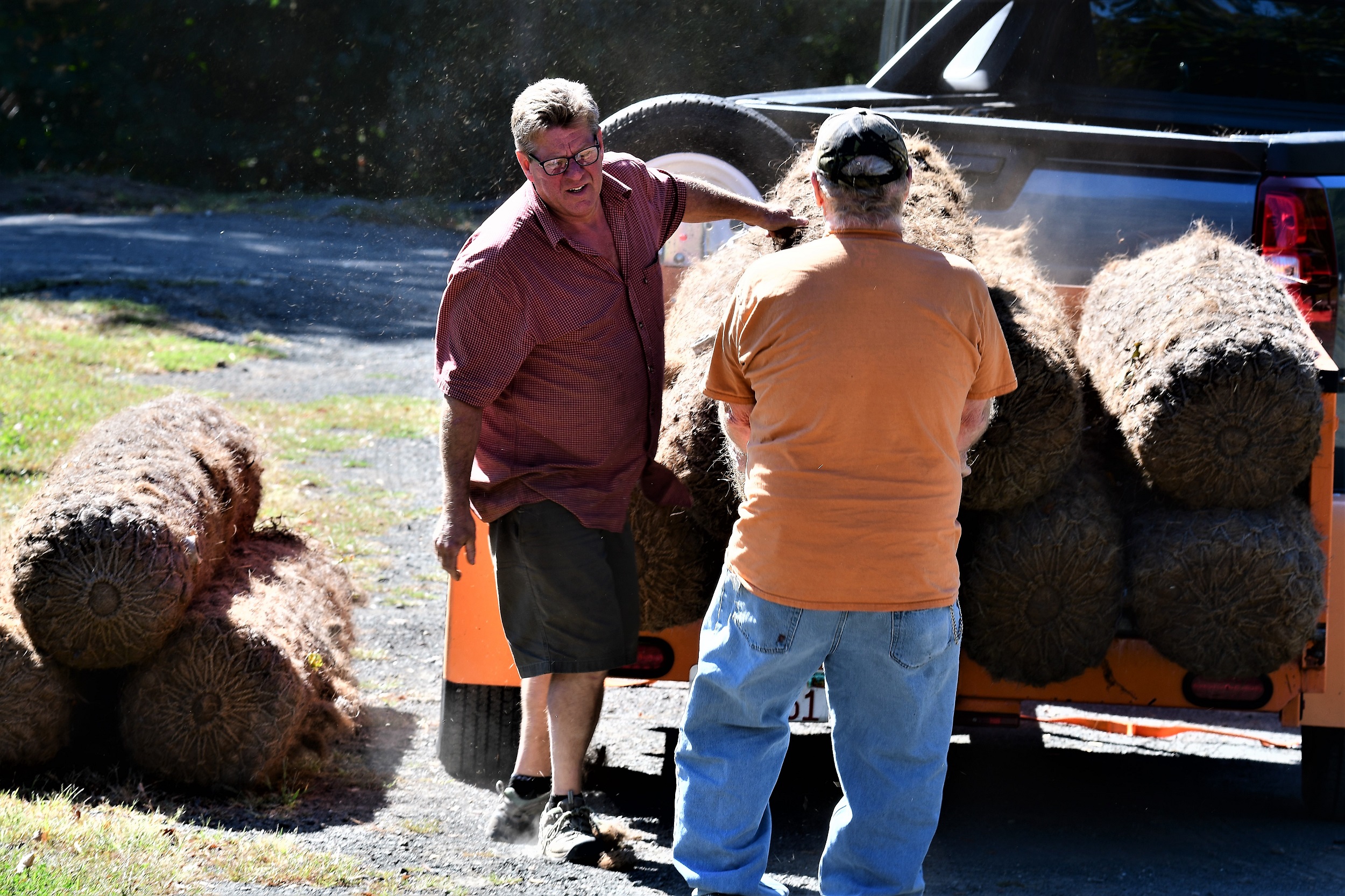
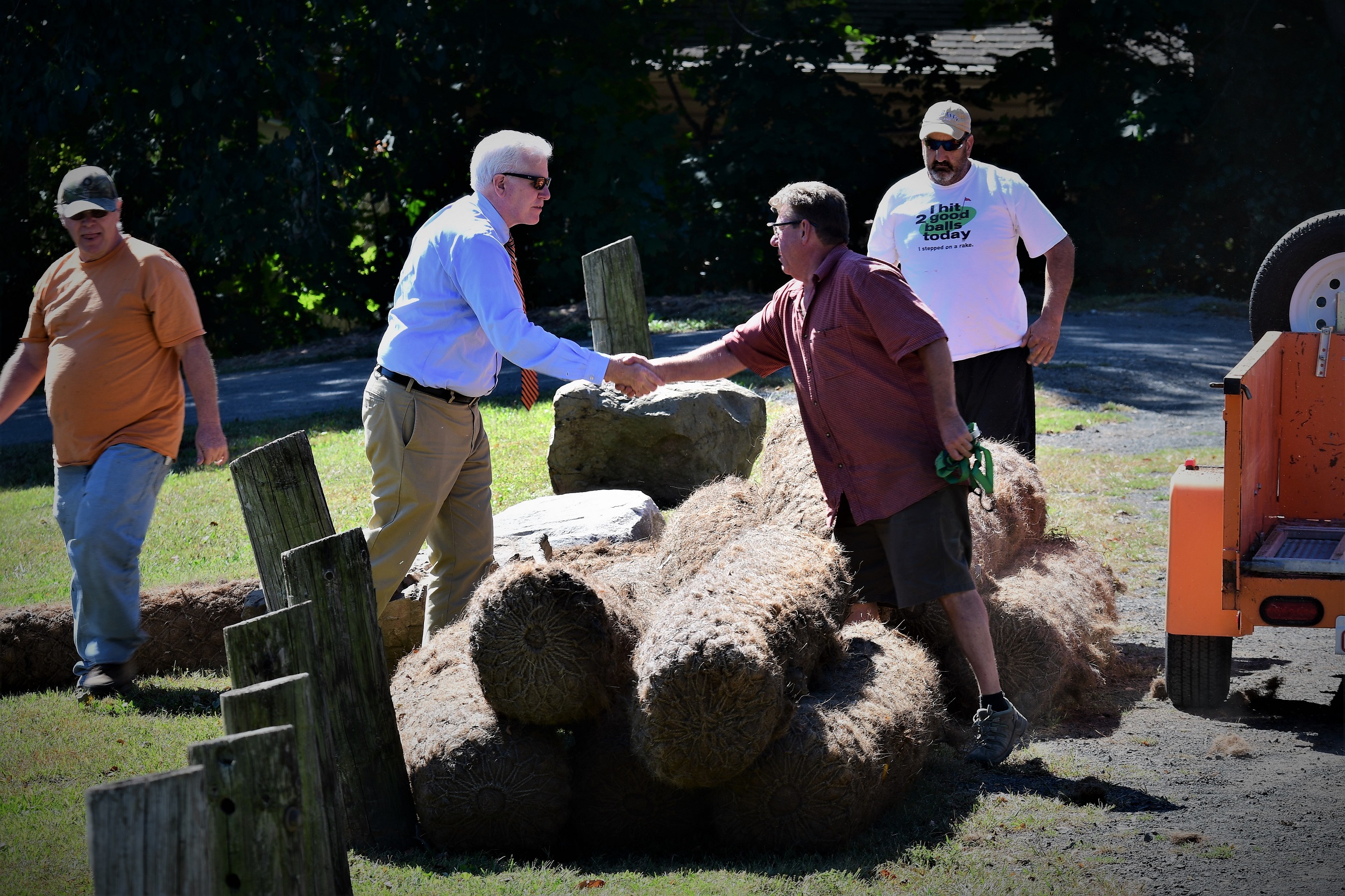
10/10/17
Today, 30 native plants and a tree was delivered and planted at Beseck Beach thanks to the help of several volunteers!
First, a Tulip tree was put in place by Public Works. This tree is a tall eastern hardwood, known for large showy flowers that resemble a tulip. The flowers attract birds, butterflies and hummingbirds. They are known to be insect and disease resistant trees. A variety of other trees will be selected to add to the property in the future.
Now that's the way to water a tree!
Fragrant Sumac, Winterberry, and Bushy Bluestem were also planted.
Fragrant Sumac produces fragrant flowers in the spring, and red/orange/yellow leaves in the fall. Berries provide winter food for birds. It also attracts butterflies. Winterberry is in the holly family, it is extremely showy in late fall and early winter when covered with bright red fruit that also supplies birds with winter food. Bushy Bluestem, is a grass. It is blue green in color changing to a coppery color in the fall. Fluffy flower heads resemble chunks of silvery cotton candy. This grass provides nesting material for birds, its seeds supply food for field sparrows, juncos and other songbirds...more will be added soon.
Above and beyond that folks jumped in during lunch breaks to lend a hand!
Additional landscape rocks were placed and the small sand dune was extended. 150 more American Beach Grass plantings will be added next week. American Beach grass is a dune stabilizer, serving to knit a dune together. This and other native plants being suggested by Kathy Connolly, Speaking of Landscapes, LLC will help to provide erosion control measures at the beach.
After the plants were put into place, the area of the beach to the side of the ramp was re-smoothed and softened with sand to assist with the launching of kayaks.
10/14/2017
With so much yet to do, the beach landscape continues to take shape with the assistance of a community of helping hands. An earlier than expected delivery of the additional American Beach grass is now in place on the extended sand dune as Phase I of the Beach Project continues. <3 our community!
10/18/2017
Landscape rocks have now been placed, the south garden is whipping into shape!
10/19/2017
Today, 250 more plants were placed. Little Bluestem went into the south garden, Switchgrass was placed along the stream bank, and a mix of Bluestem and American Beach grass went in and around the swale next to the sand dune. A little spot seeding was also done. The beach is transitioning quickly thanks to a community of generous volunteers!
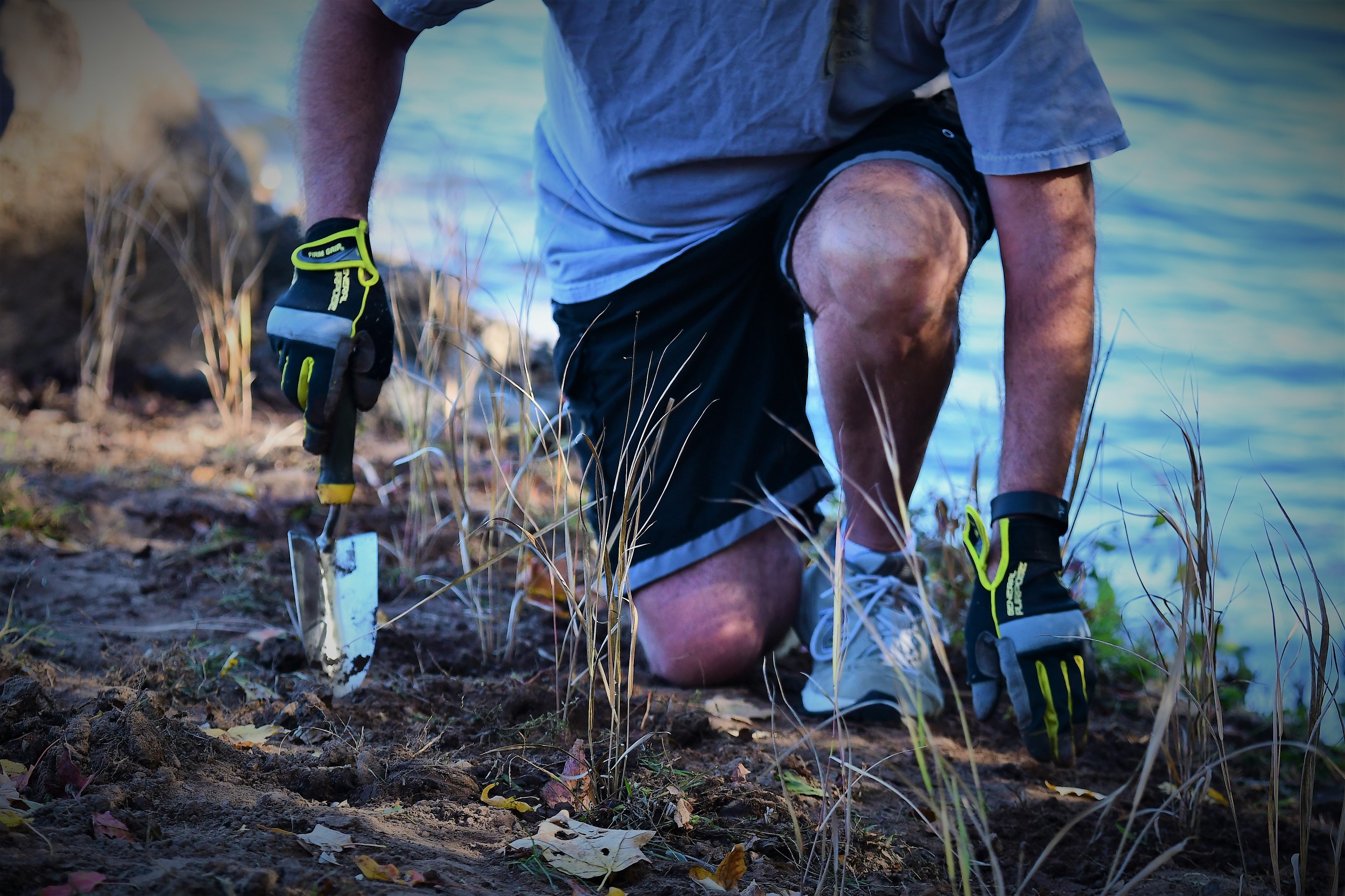
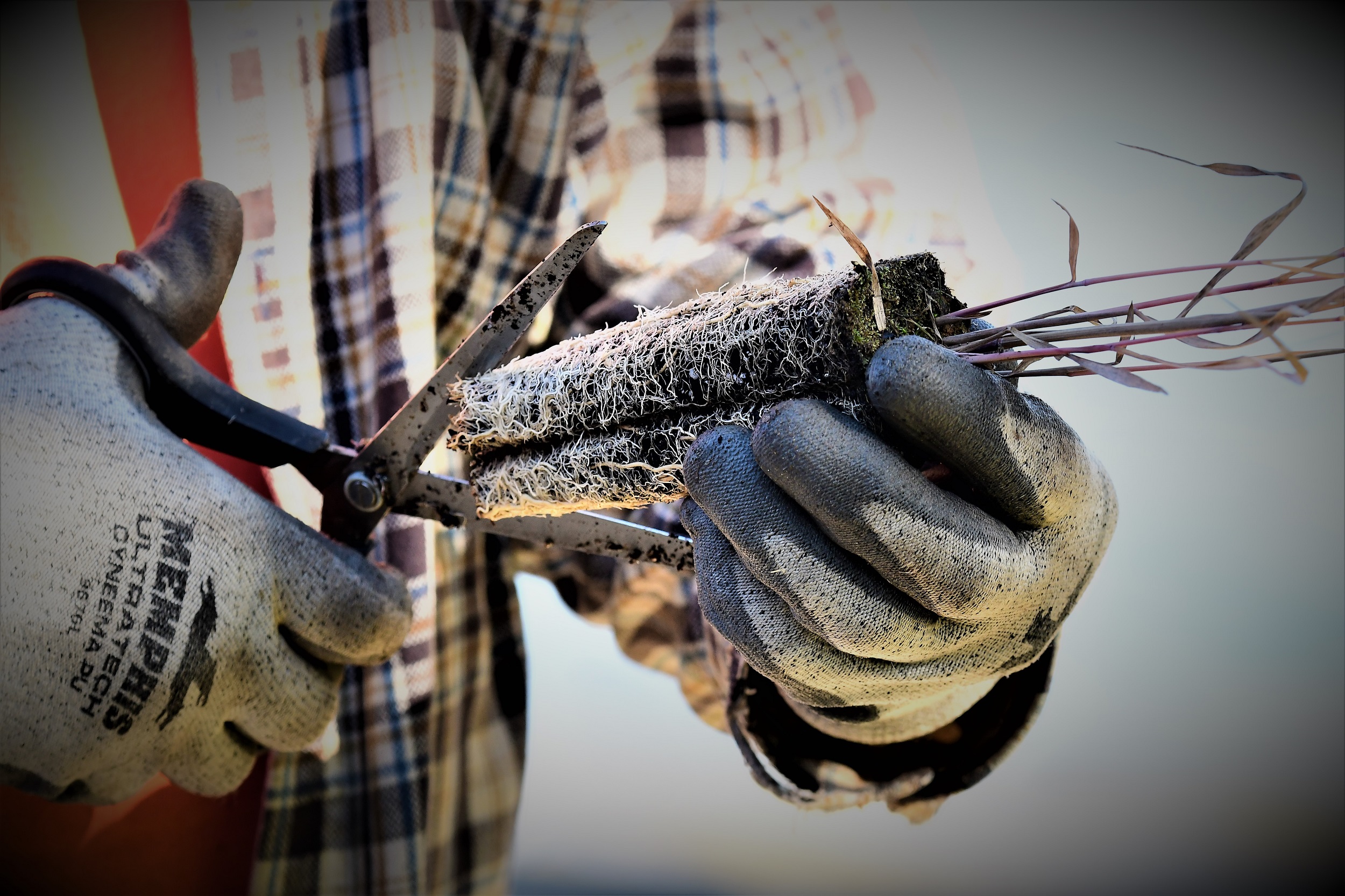
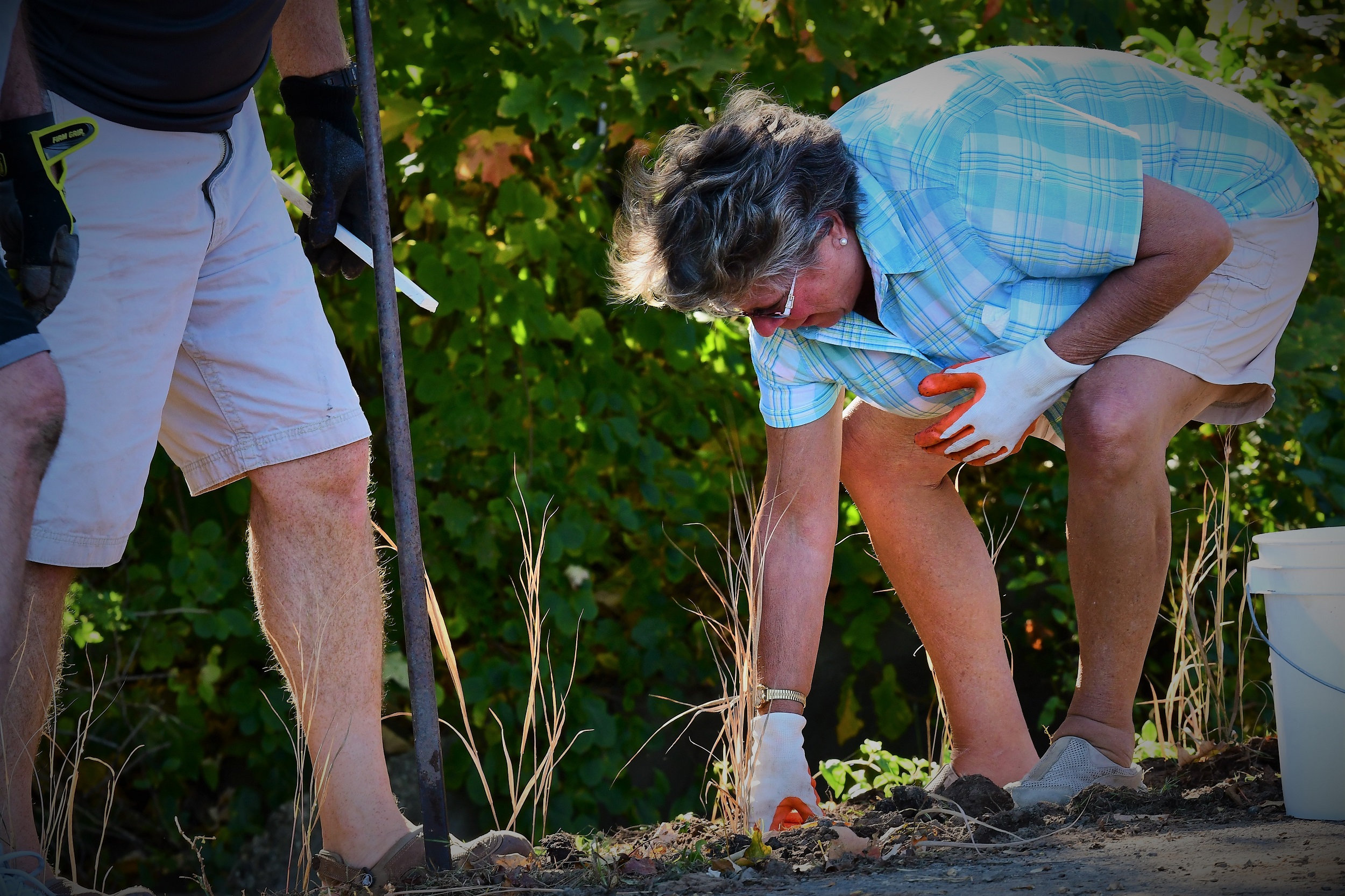

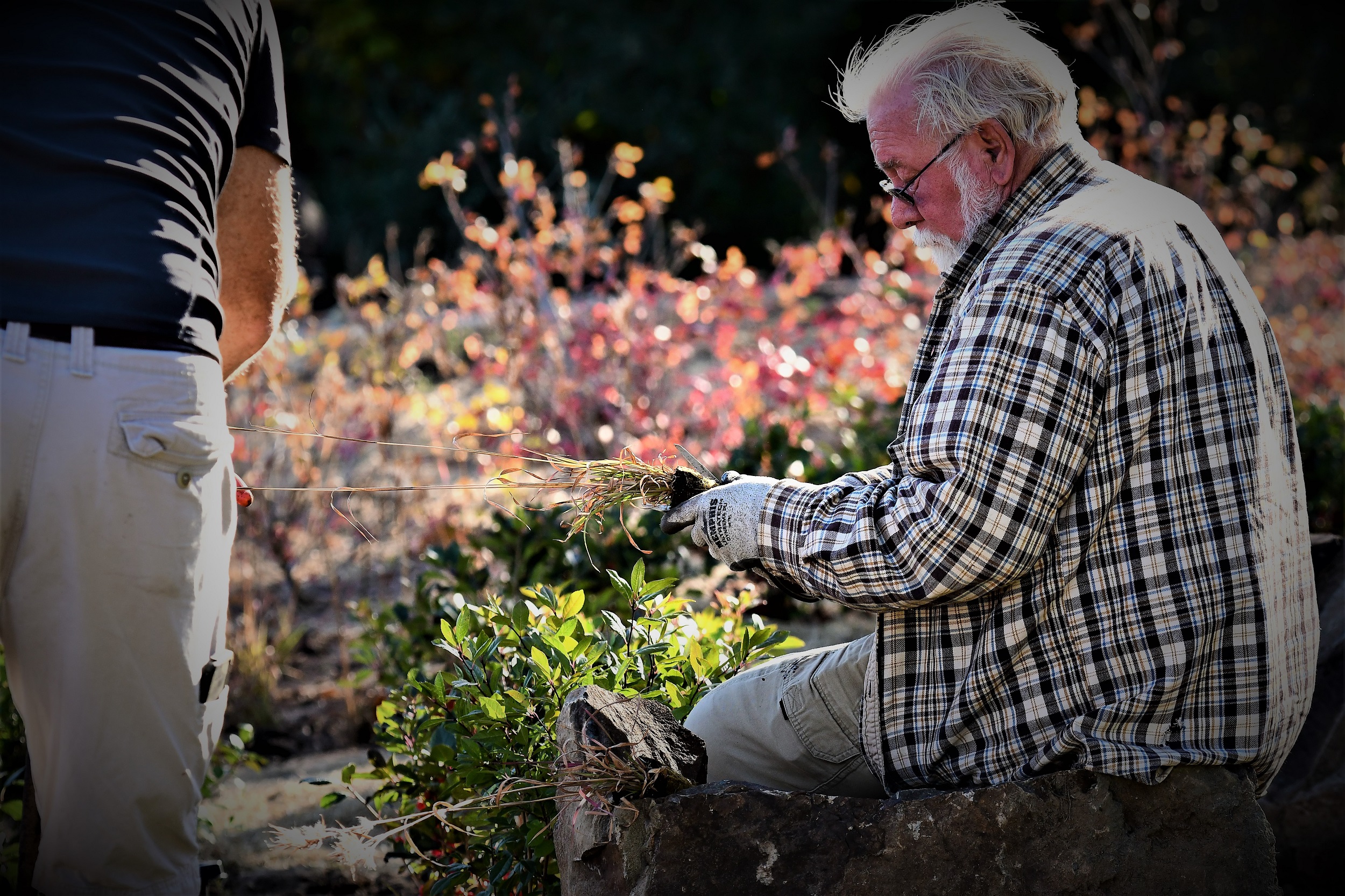
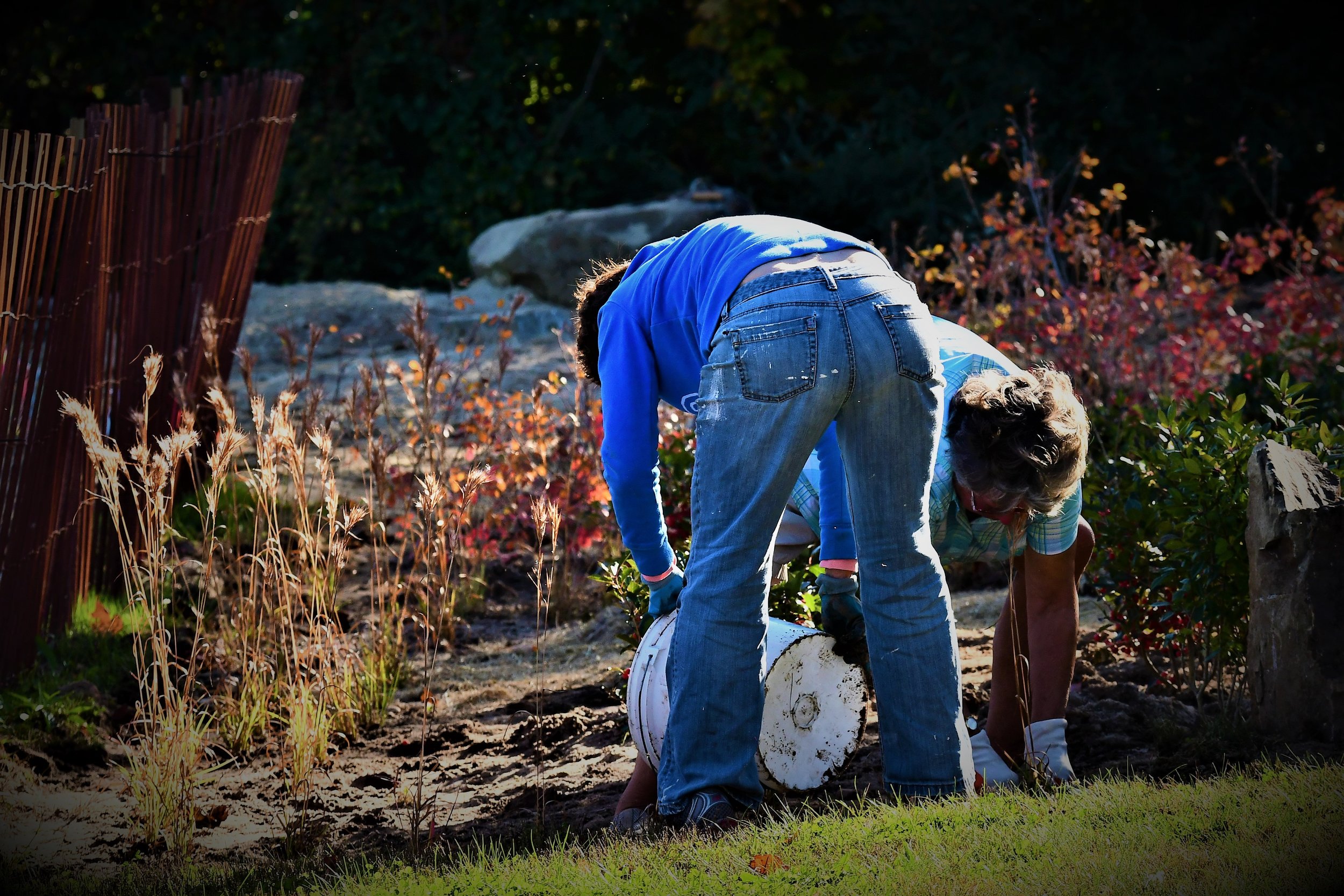
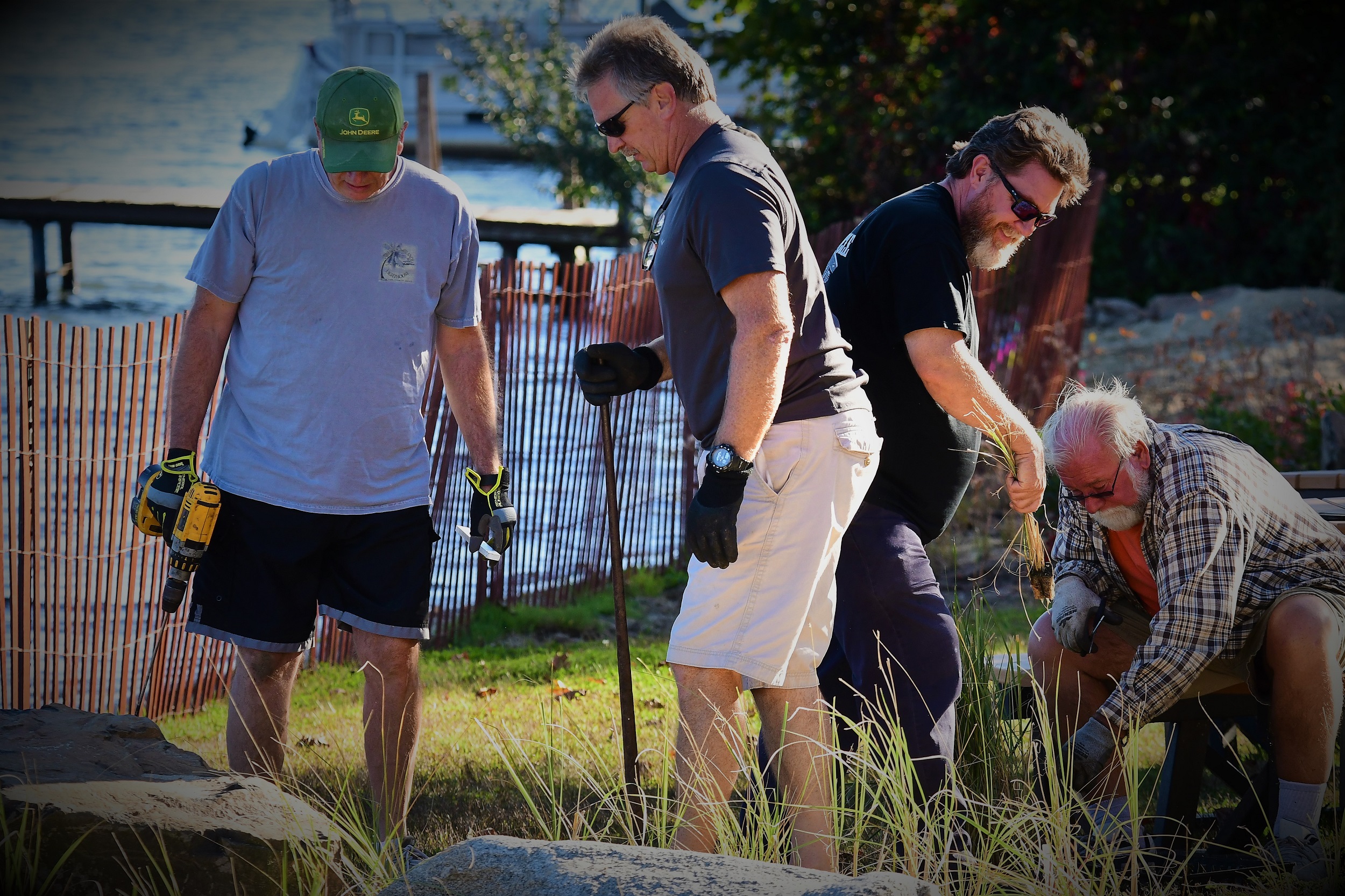
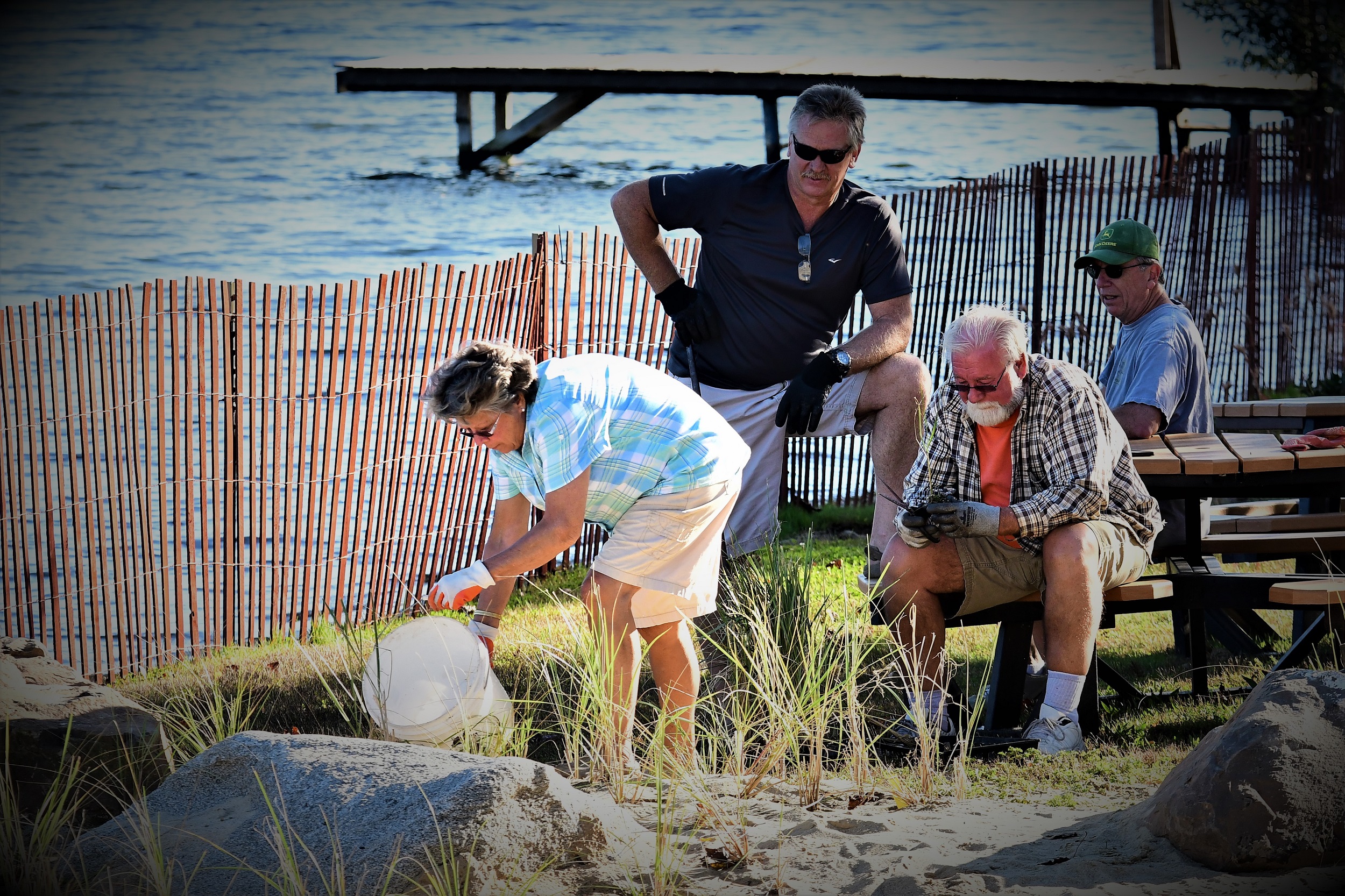
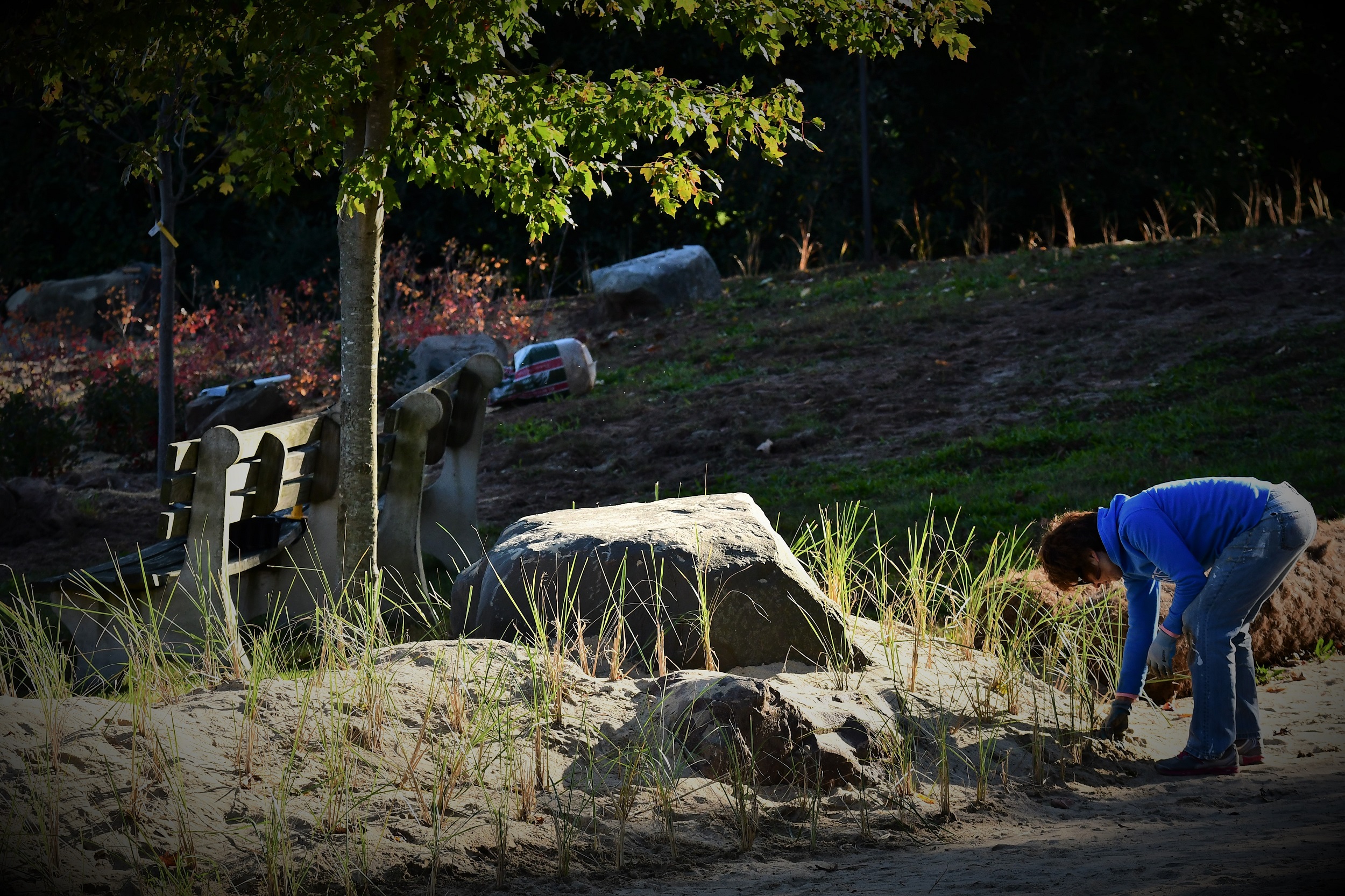
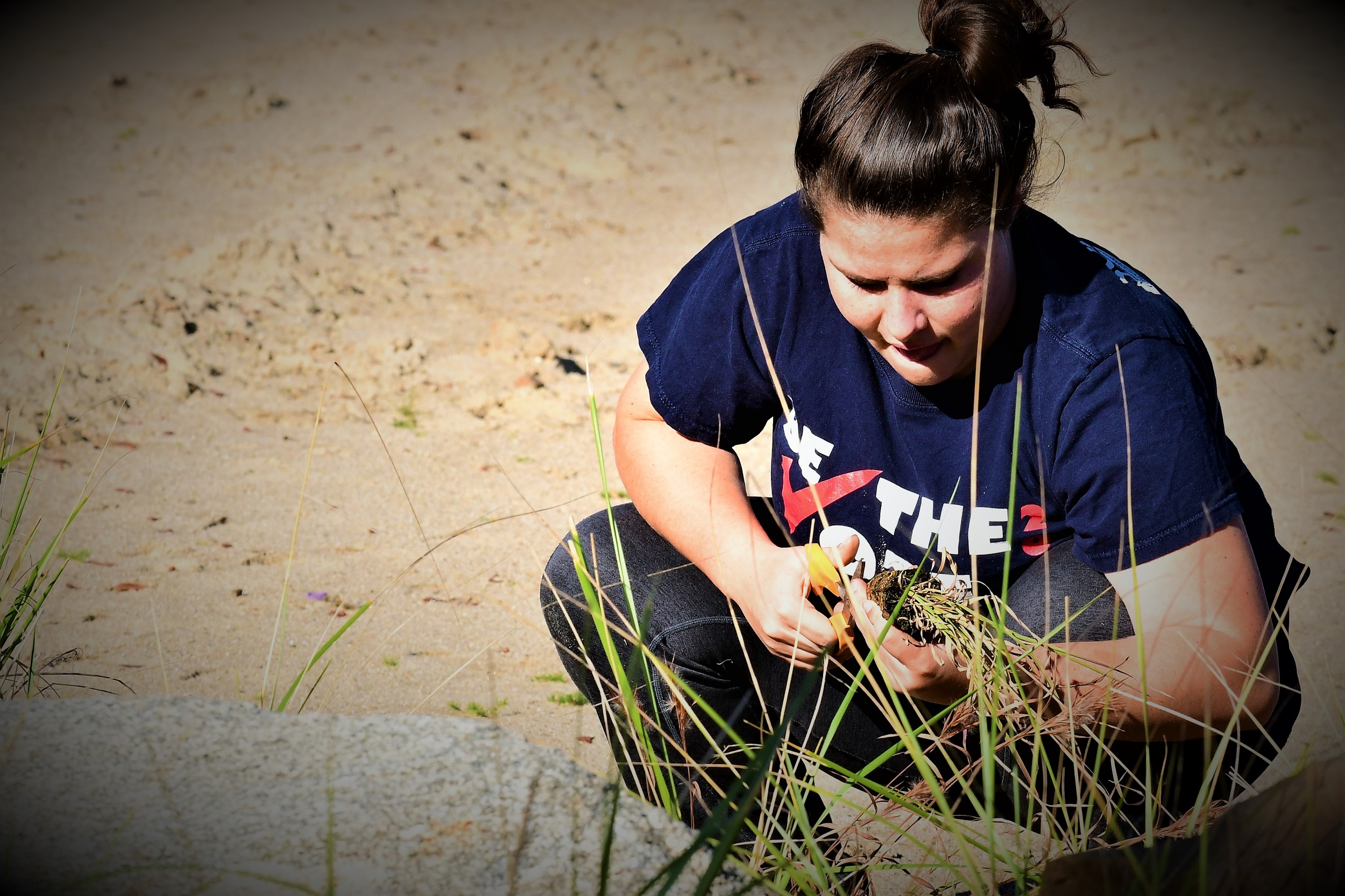
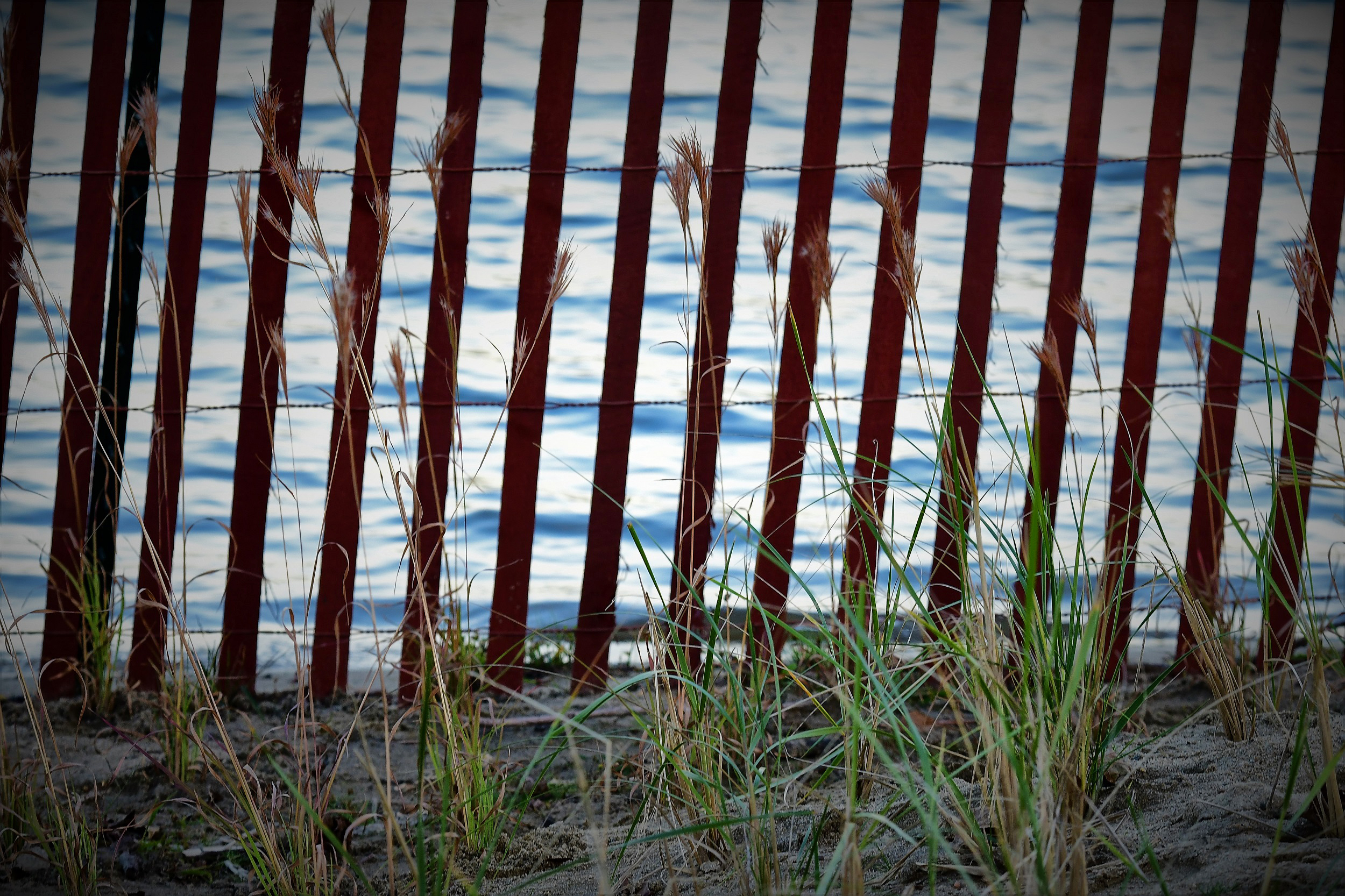
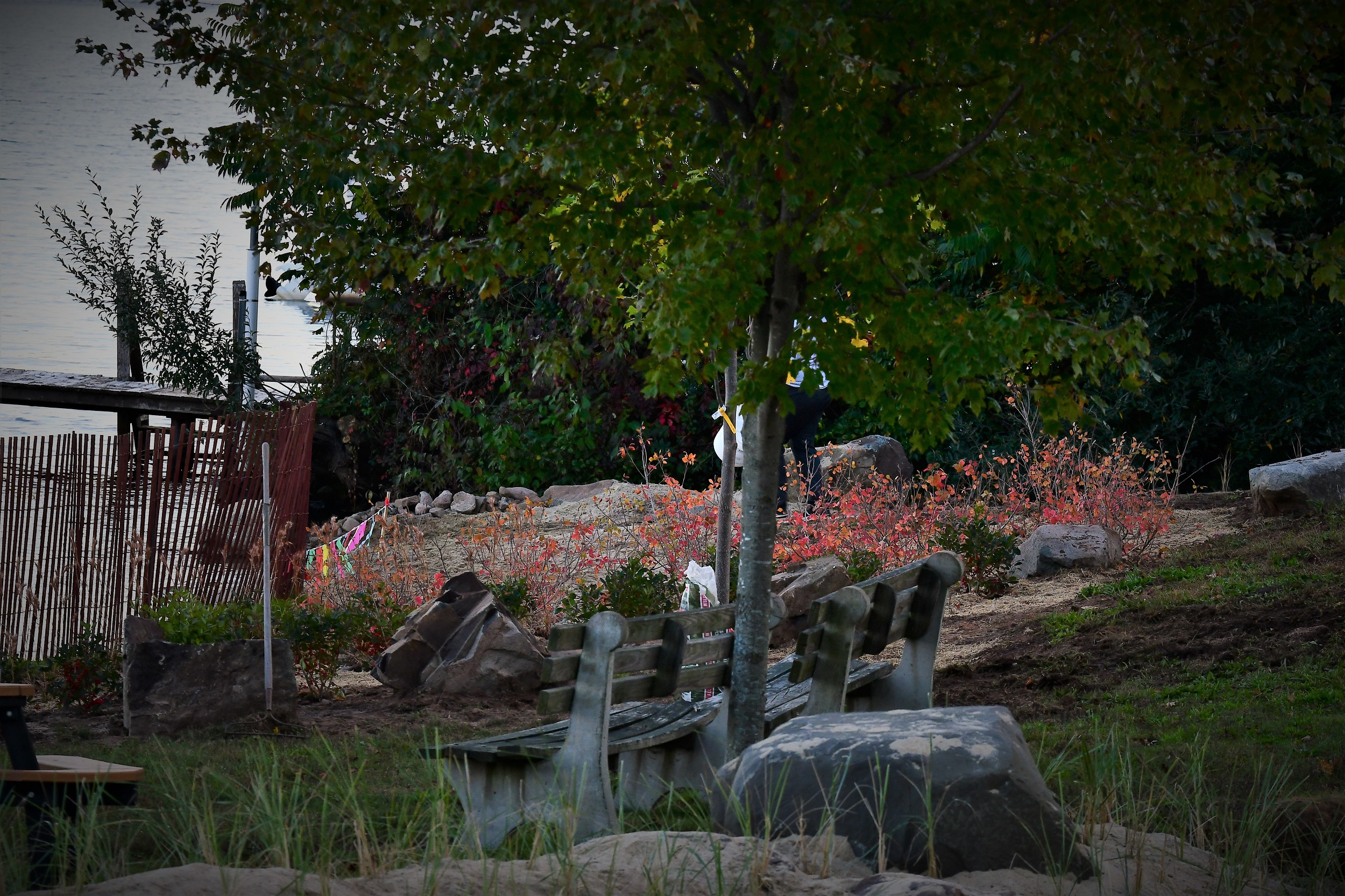
10/22/2017
Today, we were able to decorate and protect one of the dunes with timbers and nautical rope. We also gave everything a good watering while we were there!
10/26/2017
We sadly received reports that some of the grasses had eroded out after the rain storm. We were able to get them back in the ground right away. Coir logs were placed to protect the new plants.
10/30/2017
Wow, what a storm! Unfortunately, the beach took another hit. Significant erosion occurred throughout the beach. Grass plugs were found laying over with their roots exposed. In addition, the entire goose fence came down on top of many of the grasses that ran alongside.
Once again, we were able to get things back into place!
Earn Your LakeSmart Home Award
Terrestrial Remediation to Begin Soon
INTRODUCTION
Aquatic Ecosystem Research has been working with the Town of Middlefield’s Lake
Beseck Environment Committee since 2013 to create an applied long-term
management program for the Lake Beseck system. There have been some set backs
in the execution of our holistic management plan; firstly, the repair of Lake Beseck’s
dam required that the majority of the water volume be drained for 300+ days and
thwarted much of our planned activities. During that time, much of the lakebed was
exposed and terrestrial species colonized the area. The majority of the terrestrial
species died when the lake was refilled but the semiaquatic species, namely
Phragmites australis and Typha augustifolia, remained. These species currently inhabit
9-acres in the southern reaches of the lake. This has led to navigational issues, the
inhibition of recreational access, and the displacement of wildlife. We have
established a set of priorities to manage this issue; they are as follows:
1. Mitigate and control plant growth to restore and enhance recreational access.
2. Create a fiscally responsible long-term plan for the management of the
colonizing terrestrial species Phragmites australis and Typha augustifolia.
3. Improve faunal habitats and habitat variability to attract native organisms
including amphibians, reptiles, and birds. Specifically considering bird habitats,
part of the 5-acres to be removed will restore the traditional Canada Goose and
Mute Swan habitat; while leaving the 4-acre southern-most cove colonized to
attract Red-winged Blackbirds and other “reed-nesting” species.
PLAN OF ACTION
Part of Lake Beseck watershed feeds the lake at the southernmost point. This area is
affected by the colonization of terrestrial plants Phragmites australis and Typha
augustifolia over an approximately 9-acre area. Due to the water in-flow from the
surrounding watershed, this area may benefit from the presence of semi-aquatic
plants to act as a riparian buffer, which will prevent excess nutrient accumulation and
sedimentation of the lake’s shallow areas. This will also make future maintenance of
the area more simplistic and fiscally conservative.
To enhance habitat variability and ecological value, we are intending to leave a 4-acre
area at the southernmost bend of Lake Beseck inhabited by Typha augustifolia and
Phragmites australis, which will act as nutrient and sediment sinks for the southern
sub-watershed. To restore property and recreational access along the east and west
sides of the southern portion of the lake, approximately 5-acres of terrestrial plant will
be managed.
TERRESTRIAL SPECIES MANAGEMENT PLAN
We are scheduled to apply the herbicide Imazapyr to control the populations of P.
australis and T. latifolia in the areas that are currently compromising recreational
access and waterfowl habitat. This treatment will occur in the next few weeks and the
herbicide was specifically selected because of its efficacy, cost effectiveness, and
inherent safety regarding human health and environmental impacts. The herbicide will
be applied directly to the plants above the water. Below we provide some data
characterizing the herbicide of choice, Imazapyr:
Imazapyr [2-(4-isopropyl-4-methyl-5-oxo-2-imidazolin-2-yl)-nicotinic acid] is an
enzymatic inhibitor that retards the production of a specific amino acid in plants. The
target amino acid is not present in animals and Imazapyr has been shown to be
effective against both P. australis and T. augustifolia in low doses; furthermore, the
application protocol ensures that effective doses are applied to the standing plant
material in a concentration that is not active in the water column. Imazapyr has a 3 – 8
day half-life in aquatic environments with a pH greater than 5, it does not
bioaccumulate, and has very low toxicity to vertebrates. It is categorized in the lowest
risk categories for human oral or dermal exposure and the concentration necessary to
injure wildlife far exceeds that which will be applied. Finally, there is no evidence of
carcinogenic, genotoxic, or developmental effects from exposure to Imazapyr.
A FINAL NOTE TO OUR CONSTITUENTS
Our goal as a managing entity is to conserve and enhance the beautiful Lake Beseck
system. Over the past few years we have needed to take a triage approach due to the
many challenges that we have faced; however, we are making significant headway in
putting our long term management plan in to action. We have many years of data and
have made some significant decisions about the trajectory of the management plan;
the coming years will be very exciting as we move to implement our long-term
prioritized plan. Finally, your involvement is of the utmost importance and all of the
citizens are an integral part of our holistic plan; please provide any support you can to
this effort.
860.576.8628 mjunewells@aerlimnology.com www.aerlimnology.com
Lake Beseck Heron Rescue
Irene and Ken Angiletta noticed something odd about a Heron that was standing on their deck. "It was standing on our deck for about an hour when he noticed that there was a tangle around its beak". After a call to the DEEP, Wildlife Rehabilitator, Grace Krick arrived to help the entangled bird. "She cut the material which looked like a tangle of carpet and monofilament line. She took the bird in a clothes basket...it seemed stressed after the experience." The Heron went to a Rehabilitation Center called A Place Called Hope, a volunteer group that specializes in Birds of Prey.
Unfortunately, Lake Beseck Living learned that the Heron had passed during the evening. The rehabilitator stated that they were unsure how long the Heron went without food or water while it's beak was entangled with monofilament and carpet.
Please do your best to protect wildlife by cleaning up debris such as fishing line that could be harmful.
Thanks to Mary Ann Mocci who captured footage of the rescue and was kind enough to pass it along so we could share it on Lake Beseck Living. Everyone did their best, thanks for sharing!
If you want to learn more about A Place Called Hope, here's a link to their website. Be sure to check out their wish list, as most Wildlife Rehabilitators are volunteers that struggle without the generosity of those that donate to their cause.
Centralized Mailboxes in need of Replacement
Over the winter users were told that their centralized mailboxes need to be replaced. Some people were forced to retrieve their mail from the post office due to various issues with the boxes, mainly, the lack of being able to keep these boxes secure.
Postmen carried tools with them through the freezing cold temperatures of winter and did their best to keep the boxes secure so they could continue being used.
The issues - the back doors of some of the boxes fall off when postmen try to put mail in them, pins and hinges are continuously being replaced on the back access doors and on individual slots, one was hit over the winter, another on Lake Shore broke loose from its post, others are severely rusted and some are not secure from the inside, the mail falls out of the front and back of the ones near the beach due to them being severely tipped.
Conclusion, it's time to think about a solution. Not only do they look bad, they have become a constant maintenance problem.
After much inquiry, the unit replacements fall back on the users , who are considered the owners of the units. The replacement for each unit would be about $1000 or more plus installation, or mail recipients would have the option to move to a P.O. Box and pay an annual fee.
Initially, there was not an inexpensive solution other than to get volunteers to try to revamp the boxes with the assistance of the postmaster just to buy some more time, but users were told their life expectancy had really passed.
Then, an opportunity came about! Our Middlefield postmaster learned of several units that was purchased by the USPS and installed at a location and then removed only a month or so later! Brand new, hard steel boxes that will last approximately 25 years or so, to replace the plastic and aluminum ones that are currently installed and falling apart! Each of these newer units has 16 horizontal delivery slots and 2 parcel lockers.
The only thing the postmaster asked was for users to pour the concrete pads that they will anchor to, in exchange for the FREE mailboxes! The postmaster has agreed that they will anchor everything to the pads and furnish the hardware to do so, plus furnish new locks and keys to replace those not recovered, in addition to the generous USPS investment and donation of the $11,200 worth of boxes.
After much discussion, and people stepping up that want to see the boxes replaced, our local post office was able to secure the 7 mailbox replacements, worth $1600 each.
The pads that will need to be poured to these specs, 3' x 3' x 4" deep or 3' x 6' for the side by side units, adding up to only dollars if everyone pitches in for materials. The few bucks it will cost to ensure they are secure seems like a great opportunity that will not only keep units where they are, but is by far cheaper than being forced into a PO box or purchasing our own new units.
There are over 100 people utilizing these central boxes. Many thanks to the awesome volunteers that have offered to help save these users money and make this project happen!
Here is an image of the new mailbox units that was forwarded on from the postmaster...
The Lake Beseck Association has been acting as the liaison between lake residents and the post office. The volunteer initiative was discussed further at a Lake Beseck Association meeting held on Thursday May, 21 at 7 PM where a unanimous decision was reached to move forward with the initiative. All were in favor of the LBA fronting the initial cost for materials. Suggestions were made on how to recoup the expense, such as a donation cup during the LBA picnic, having the postmaster collect money when keys were picked up, and the other thought was that the initiative may encourage Lake Beseck Association memberships.
The LBA is asking to help spread the word about the project. More help is needed with digging pads, mixing concrete, pouring the 3' x 3' x 4" concrete pads, quallity control, etc.
Many thanks to our volunteers so far:
Ed Bailey, John Beichner, Curt Cromack, Cindy DiLauro, Jon & Kim Elliott, Christine Graichen, Ron Frost, Craig Lundell, John Manning, Rob & Amy Poturnicki, Rick Santos, Pete Sibley
If you wish to donate toward or volunteer for the project, please respond below or use the "contact us" link.

